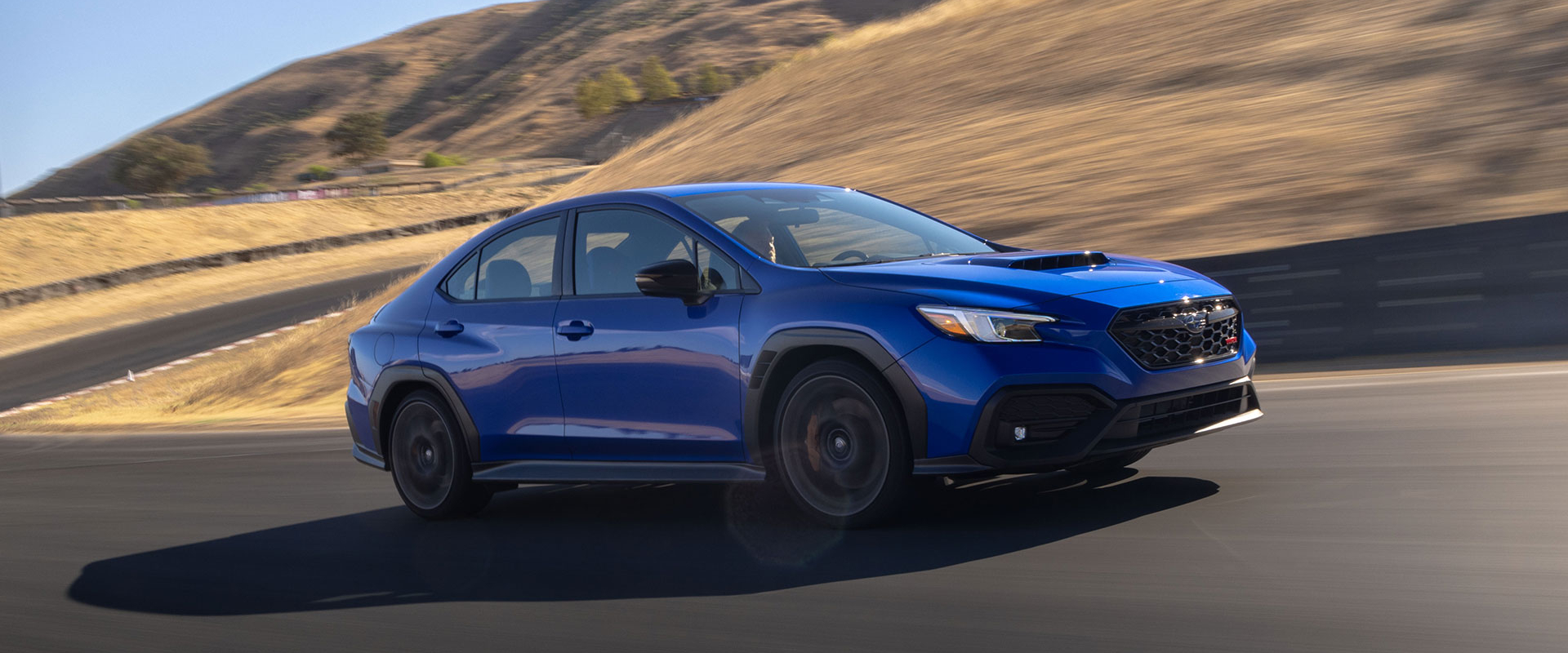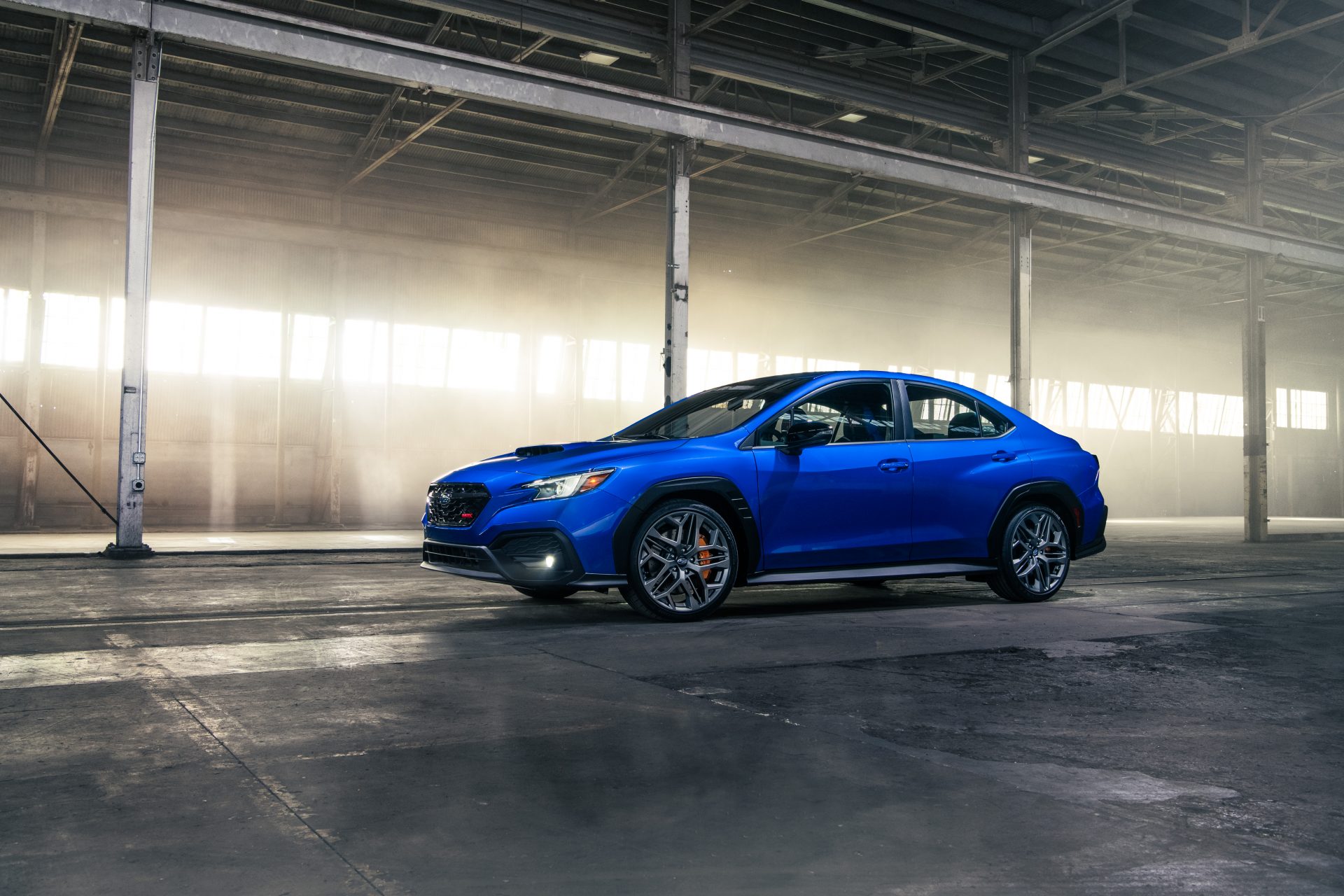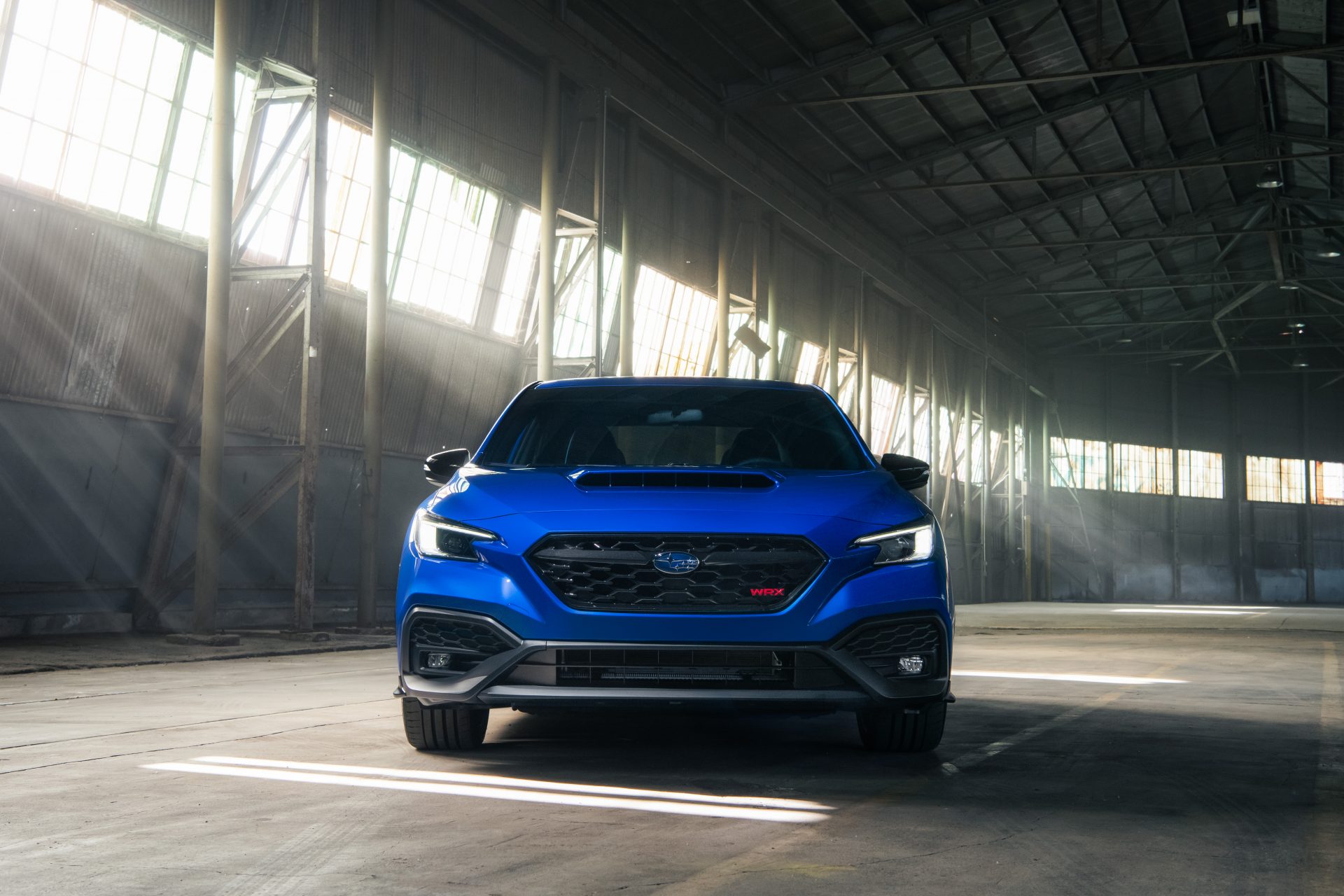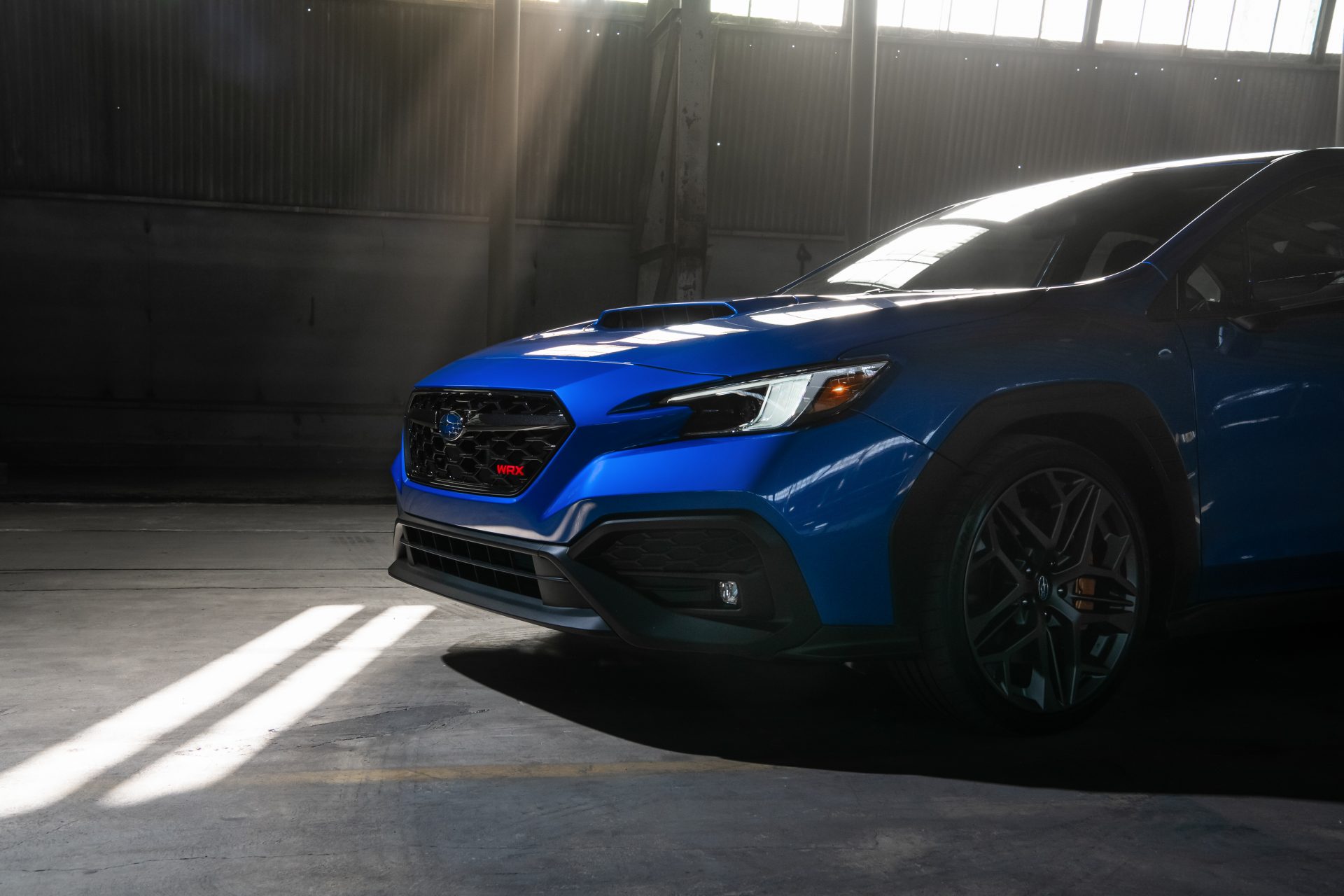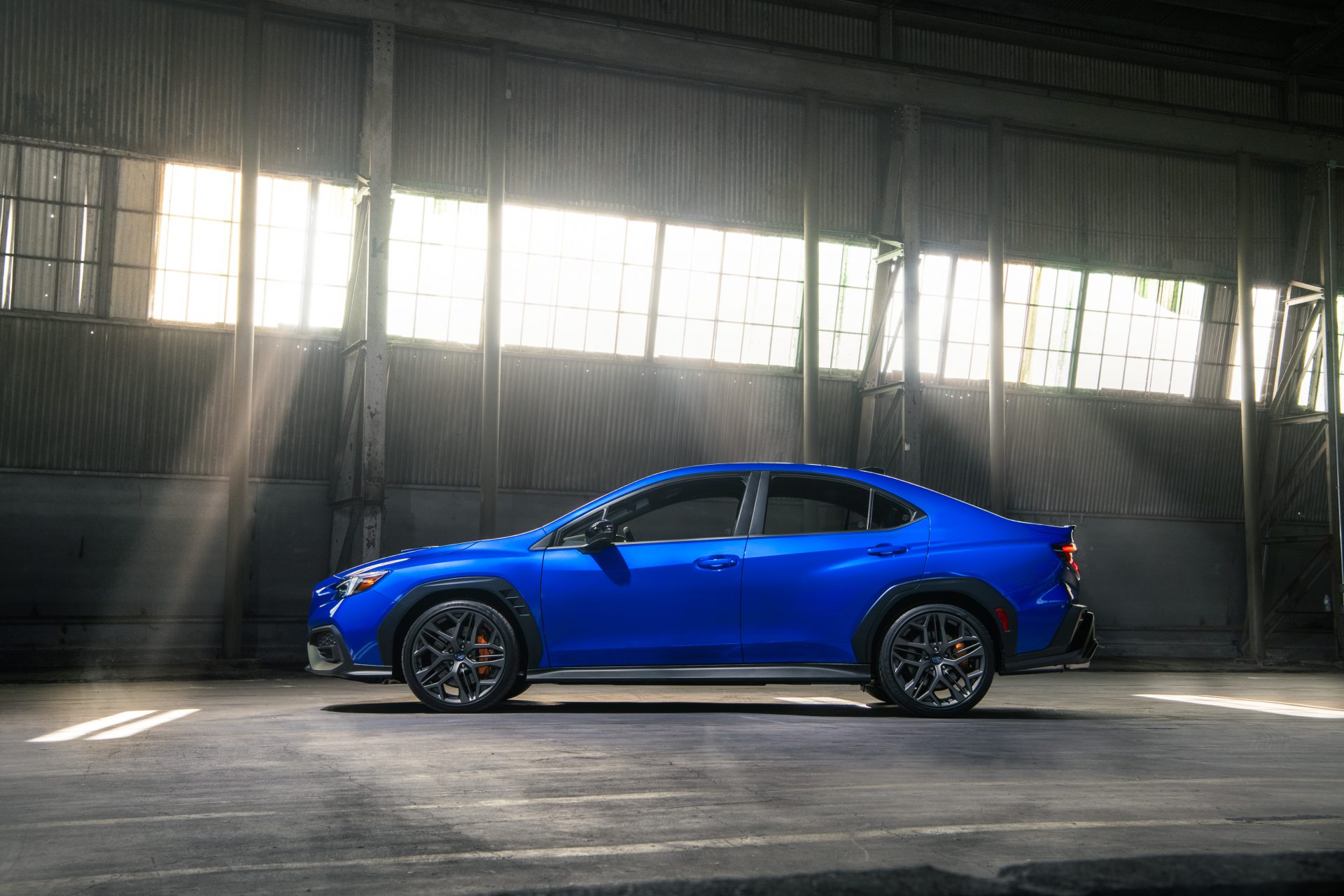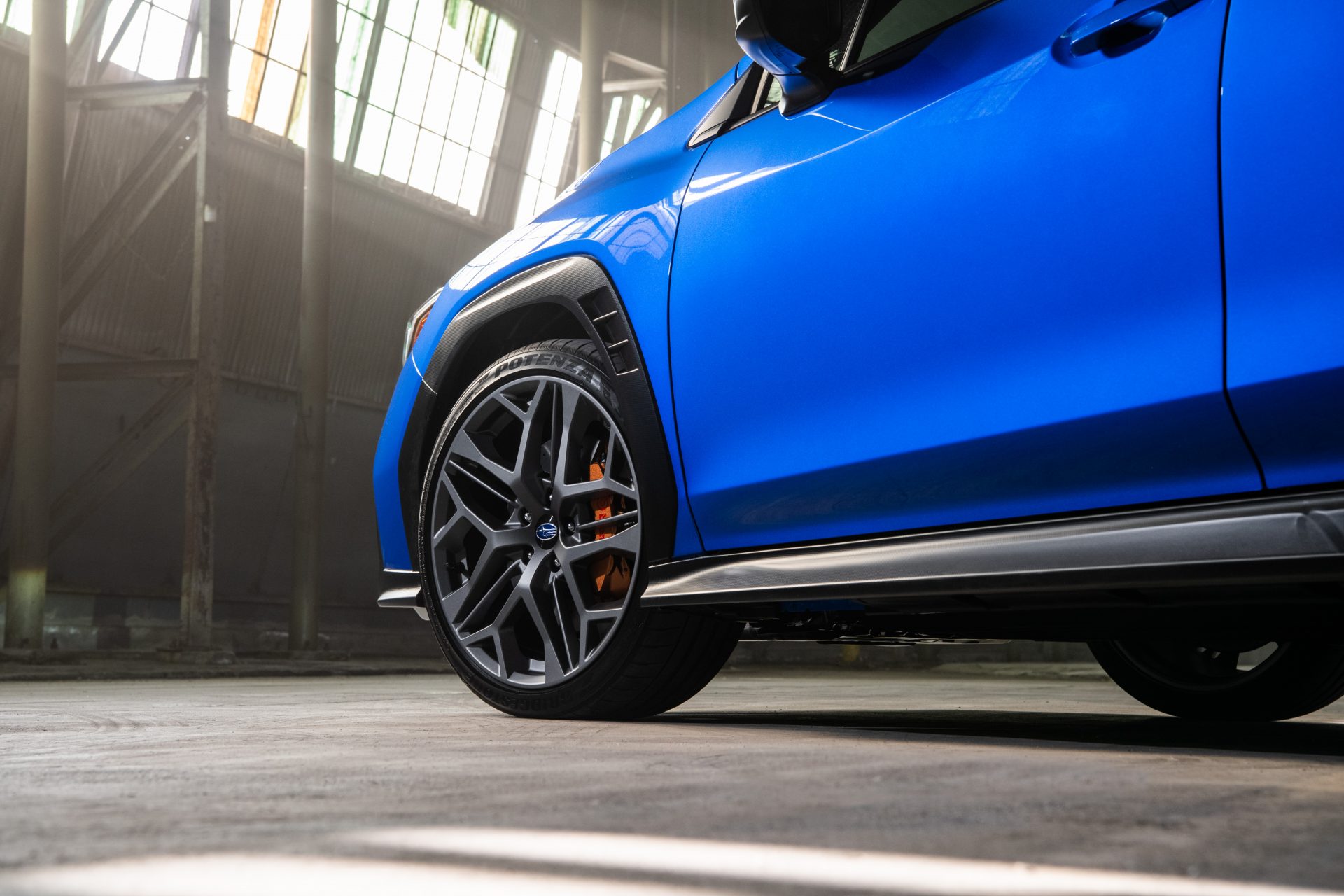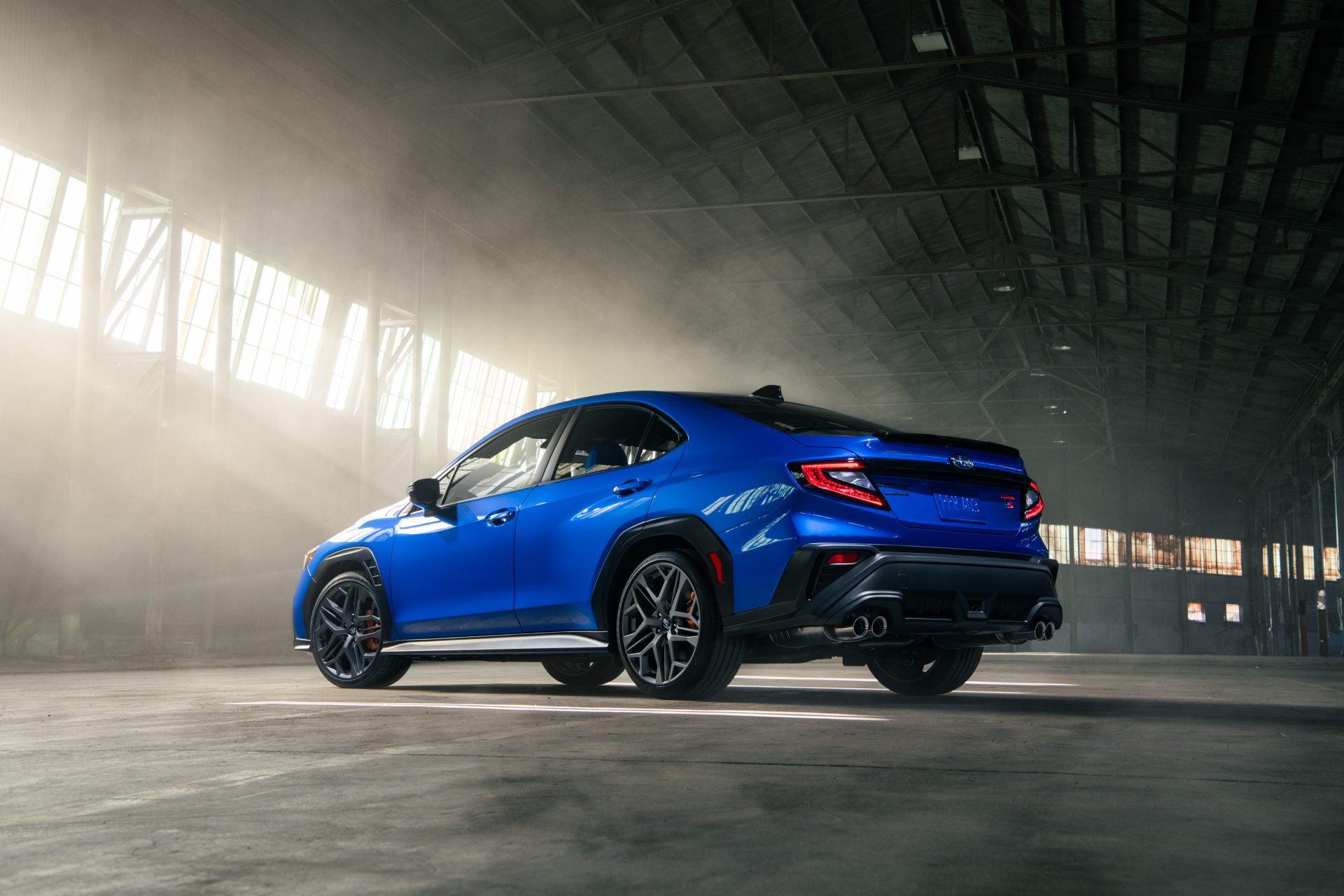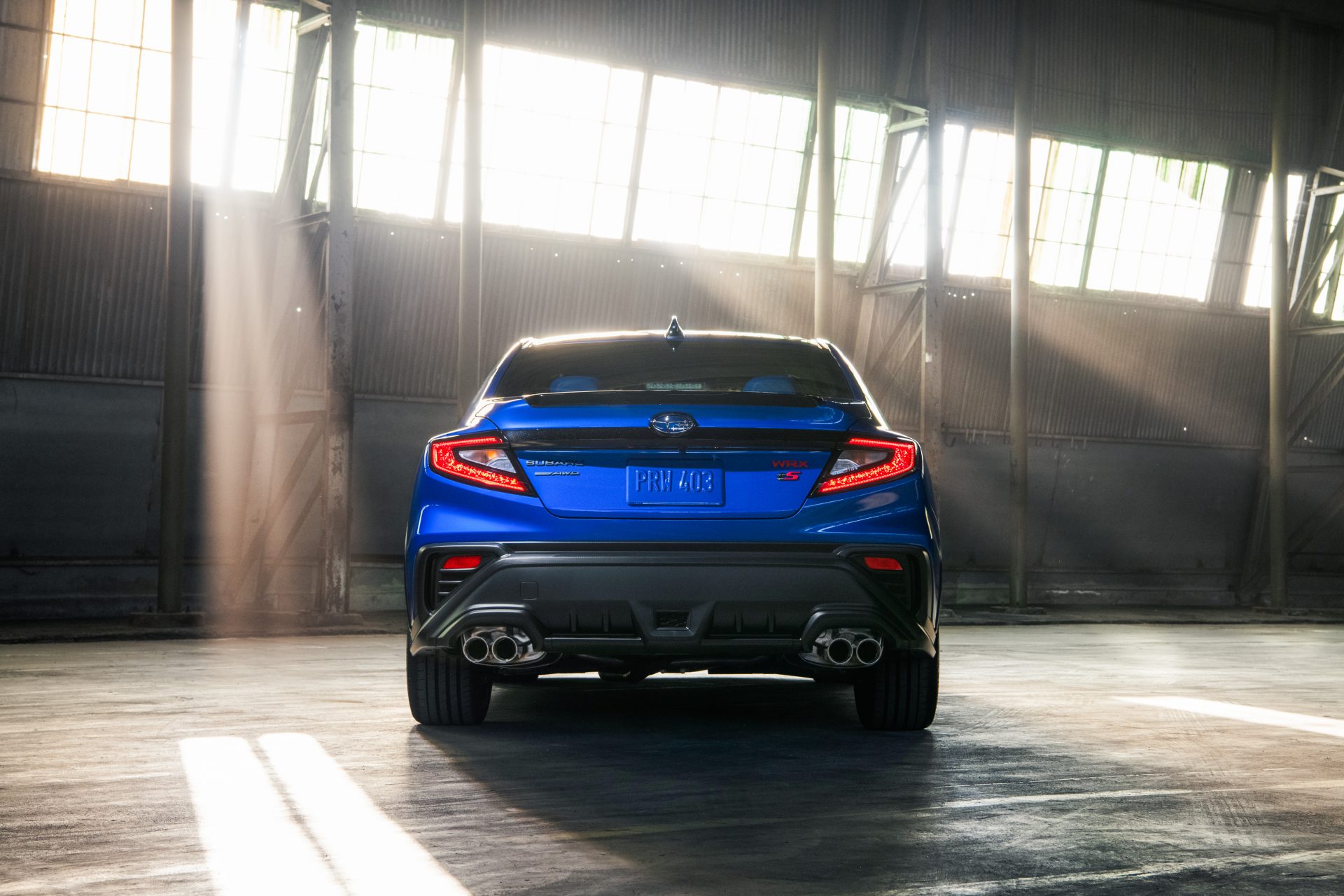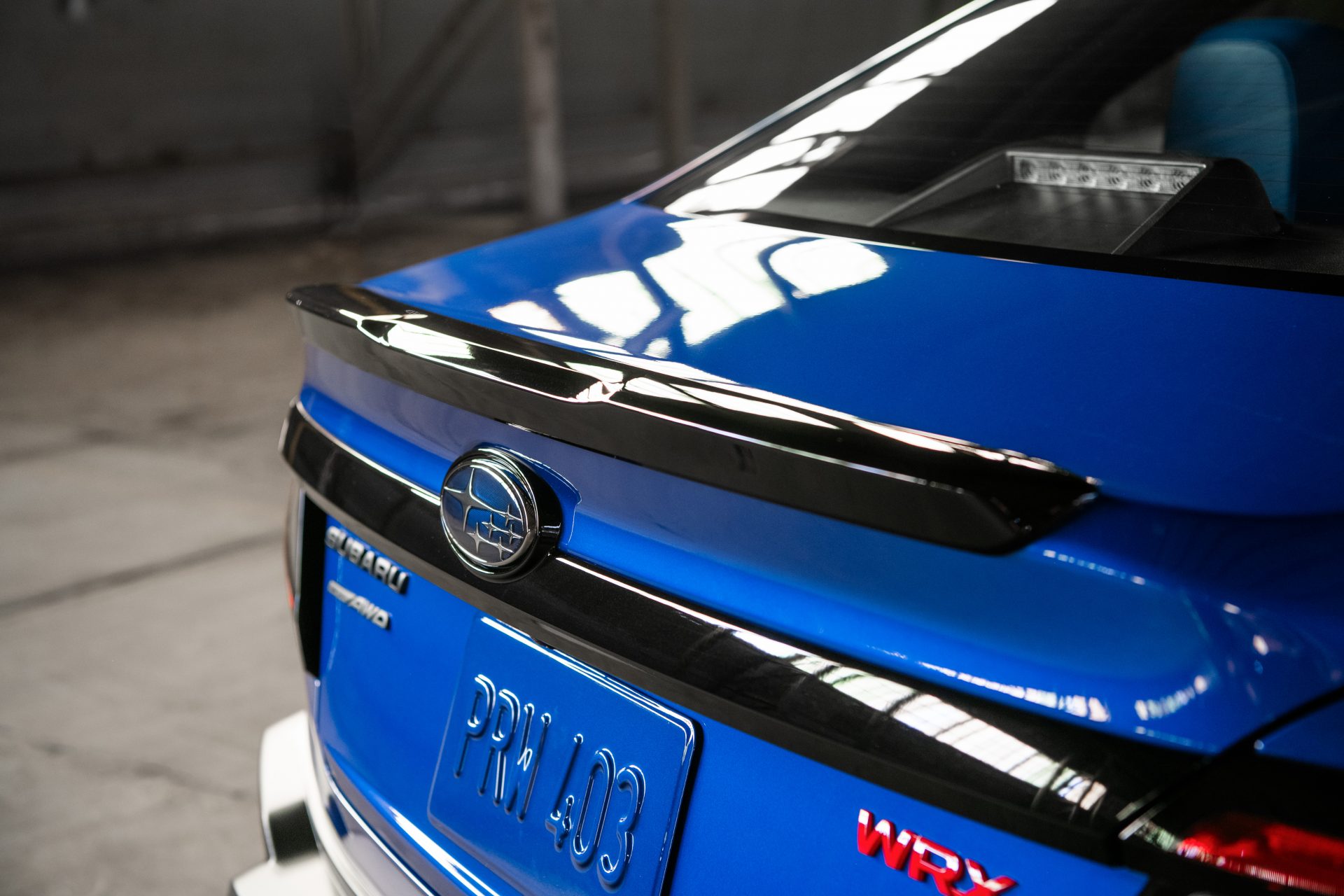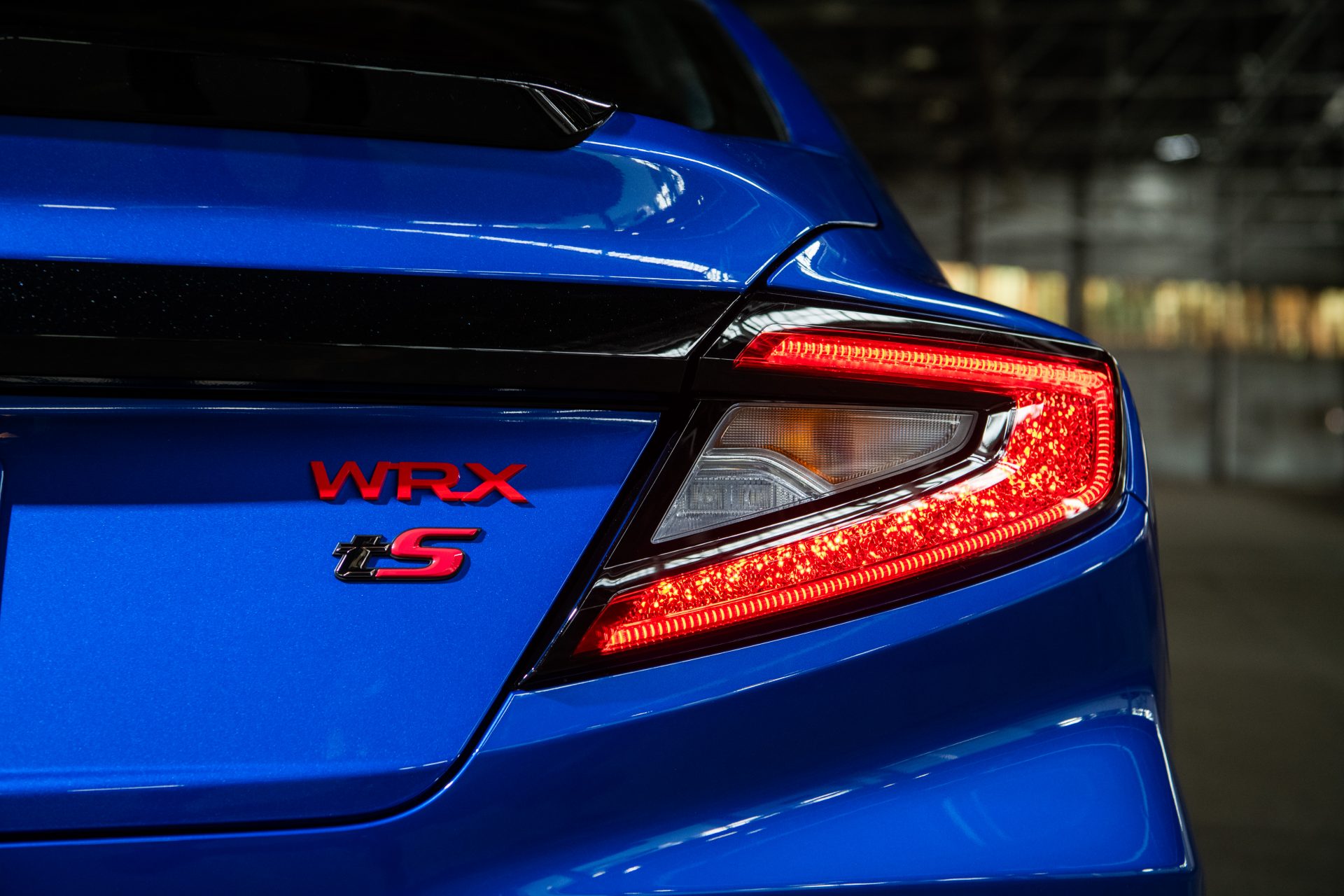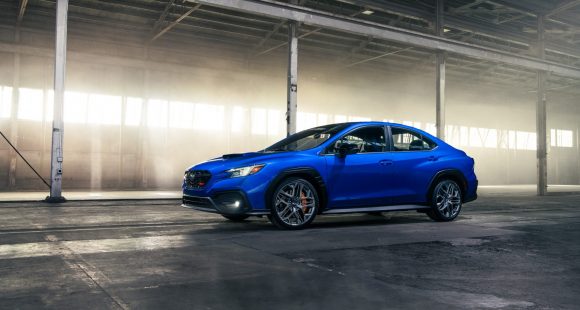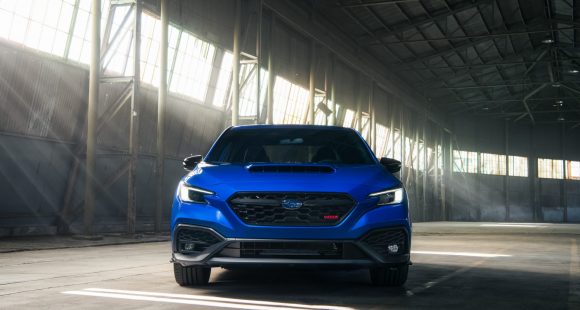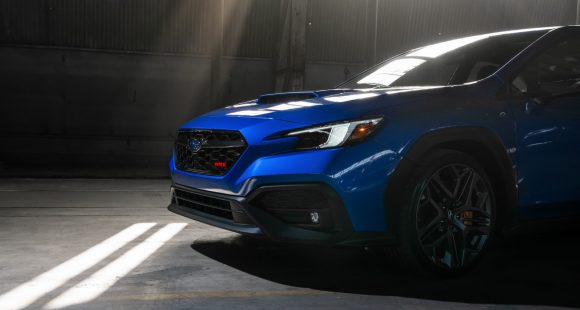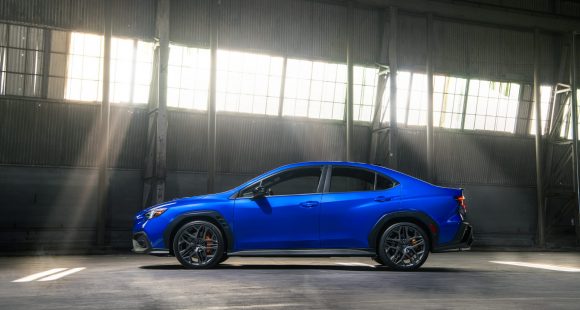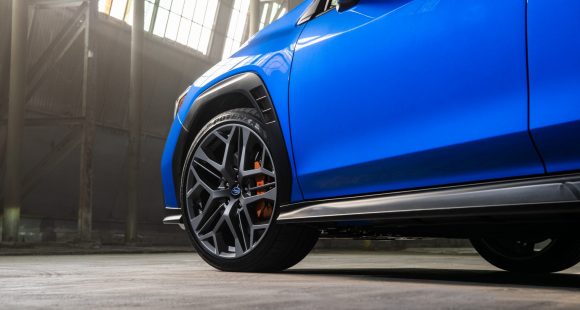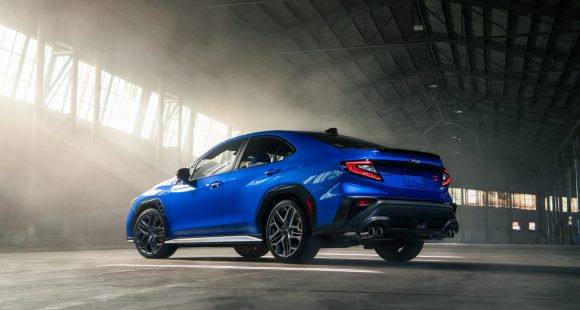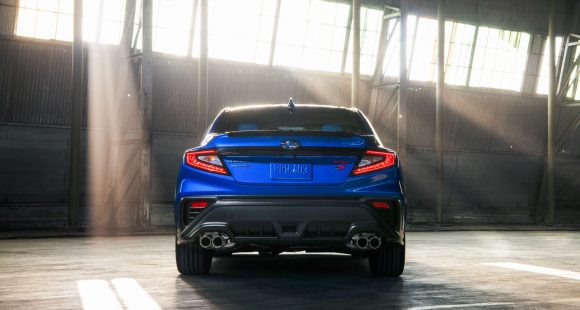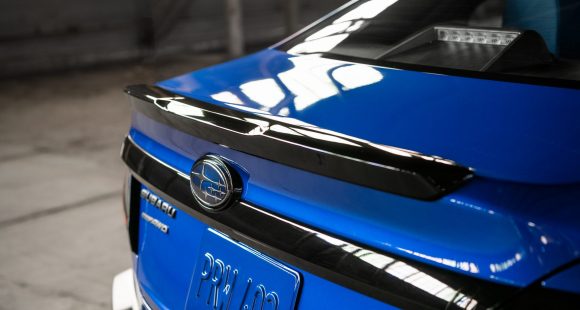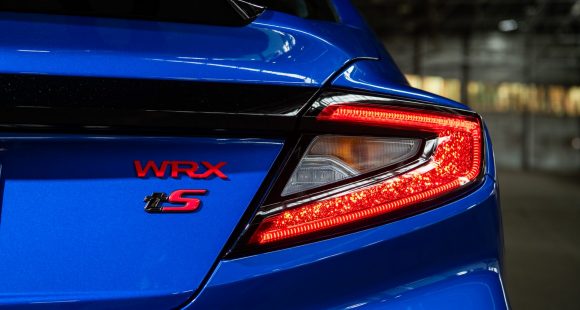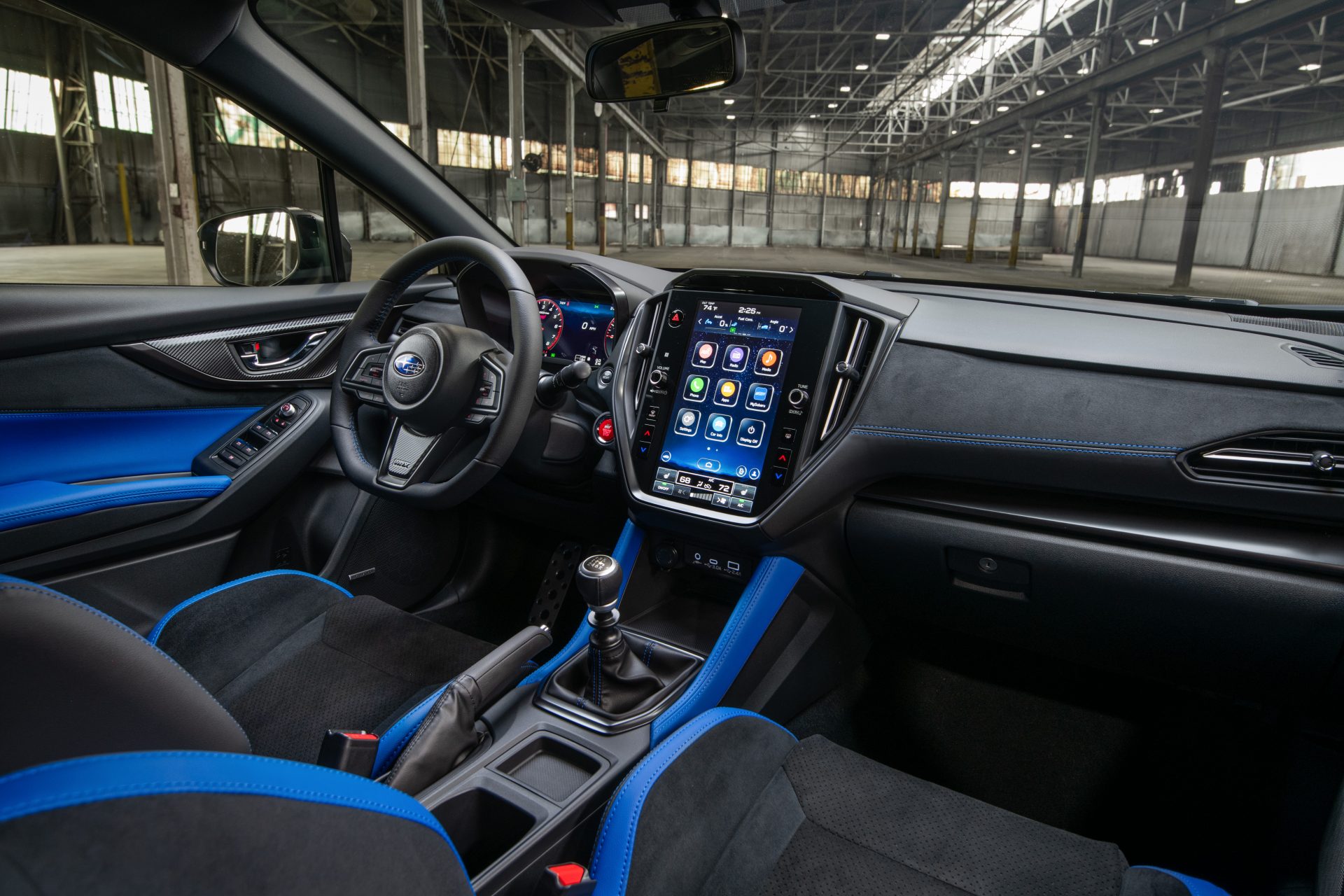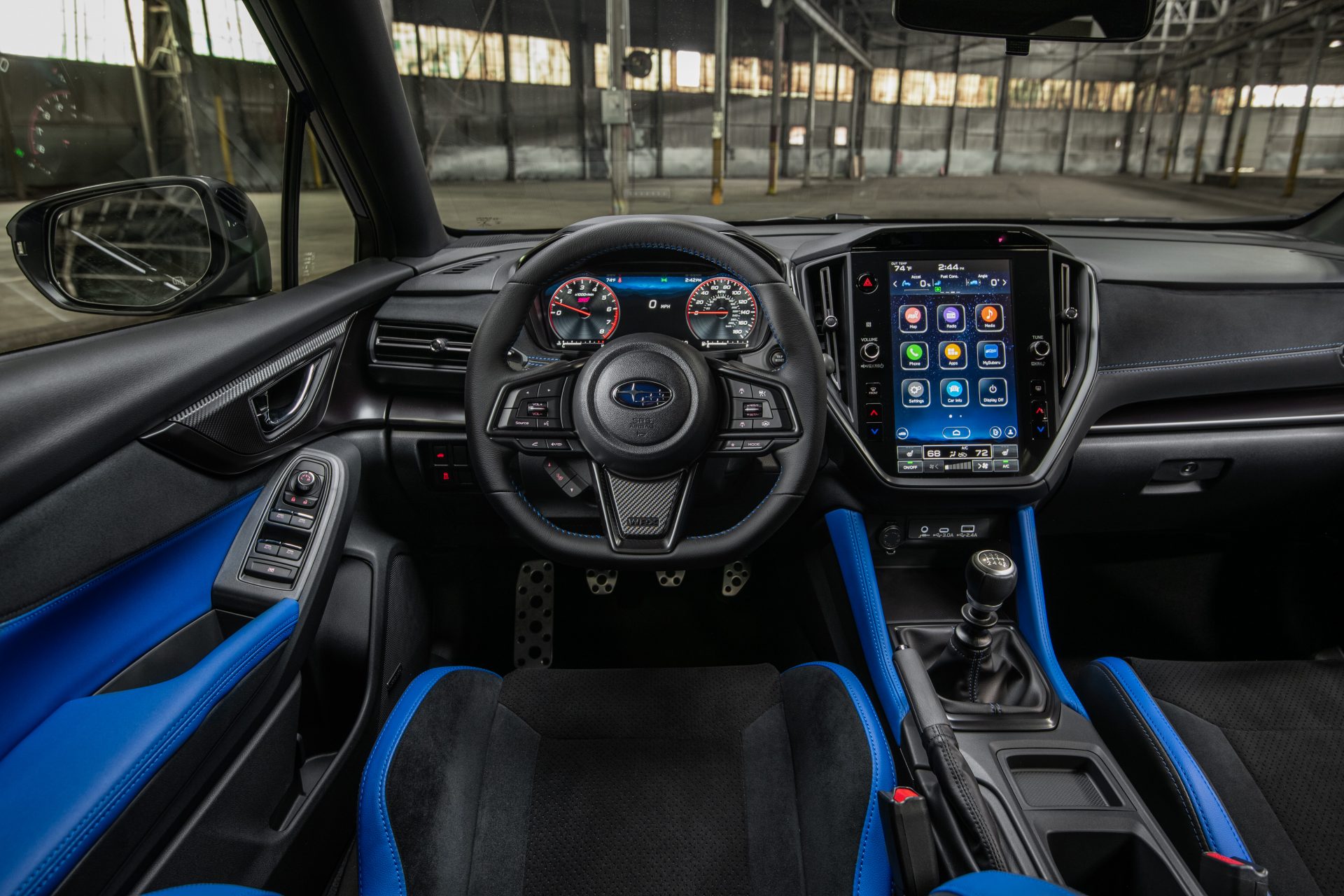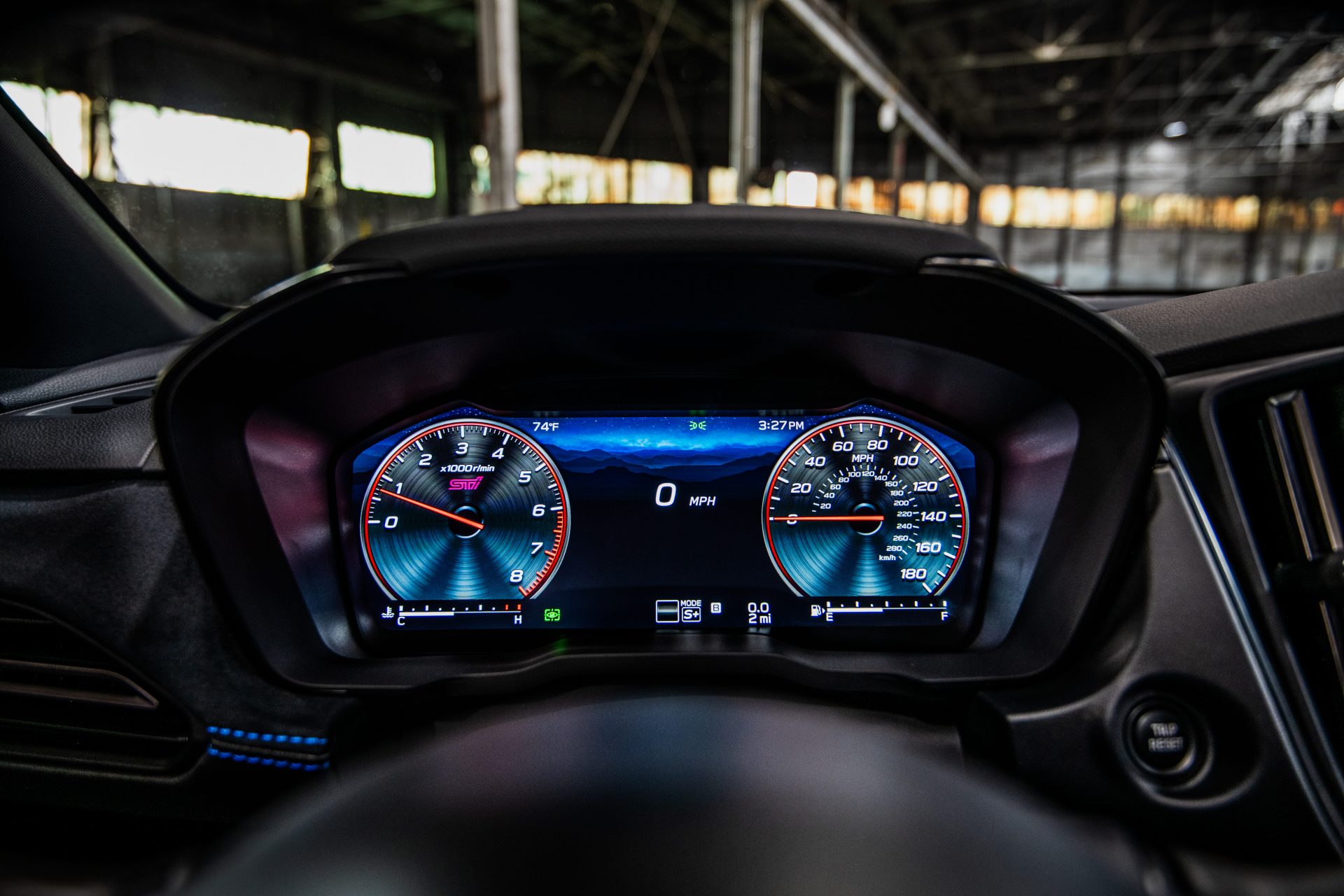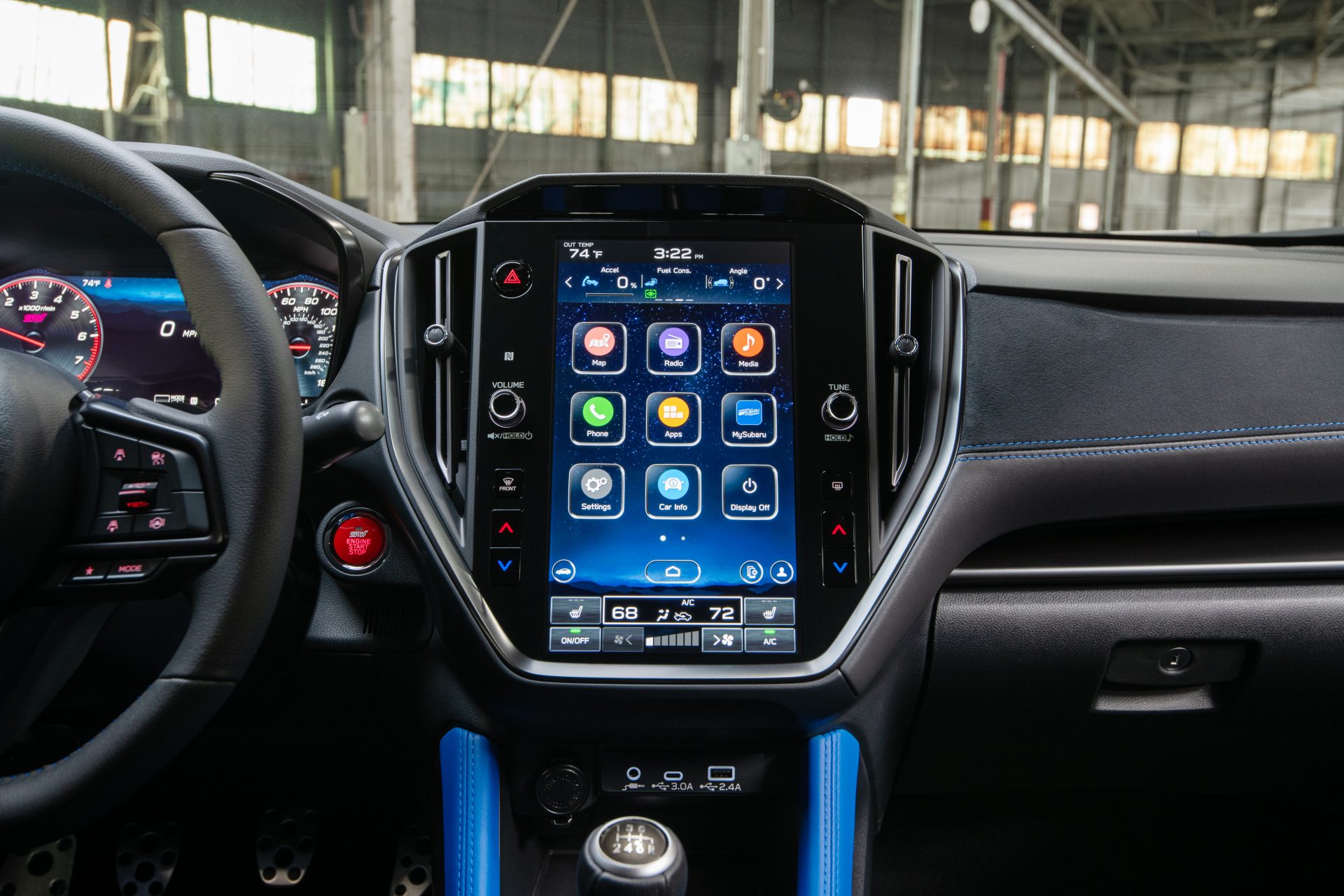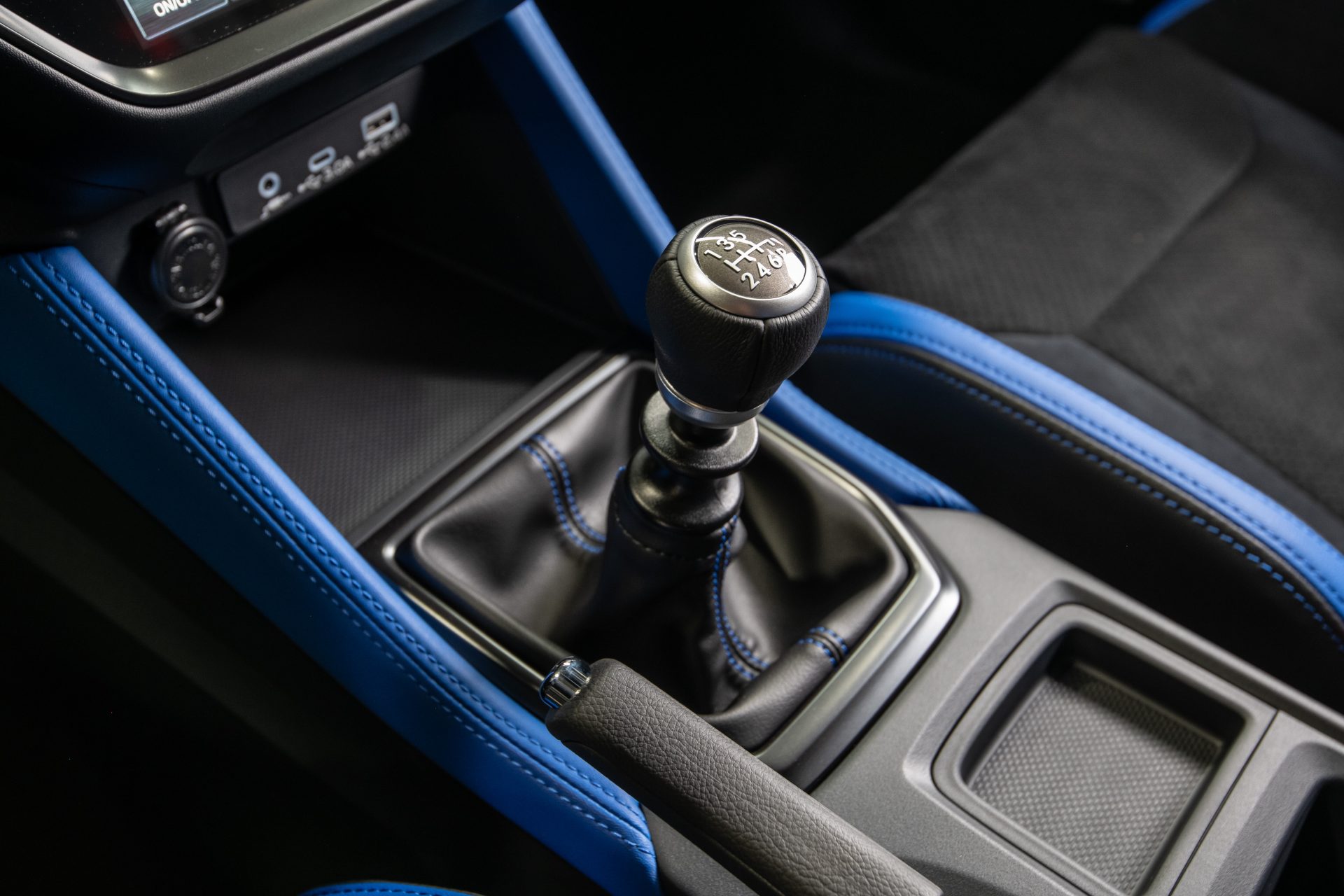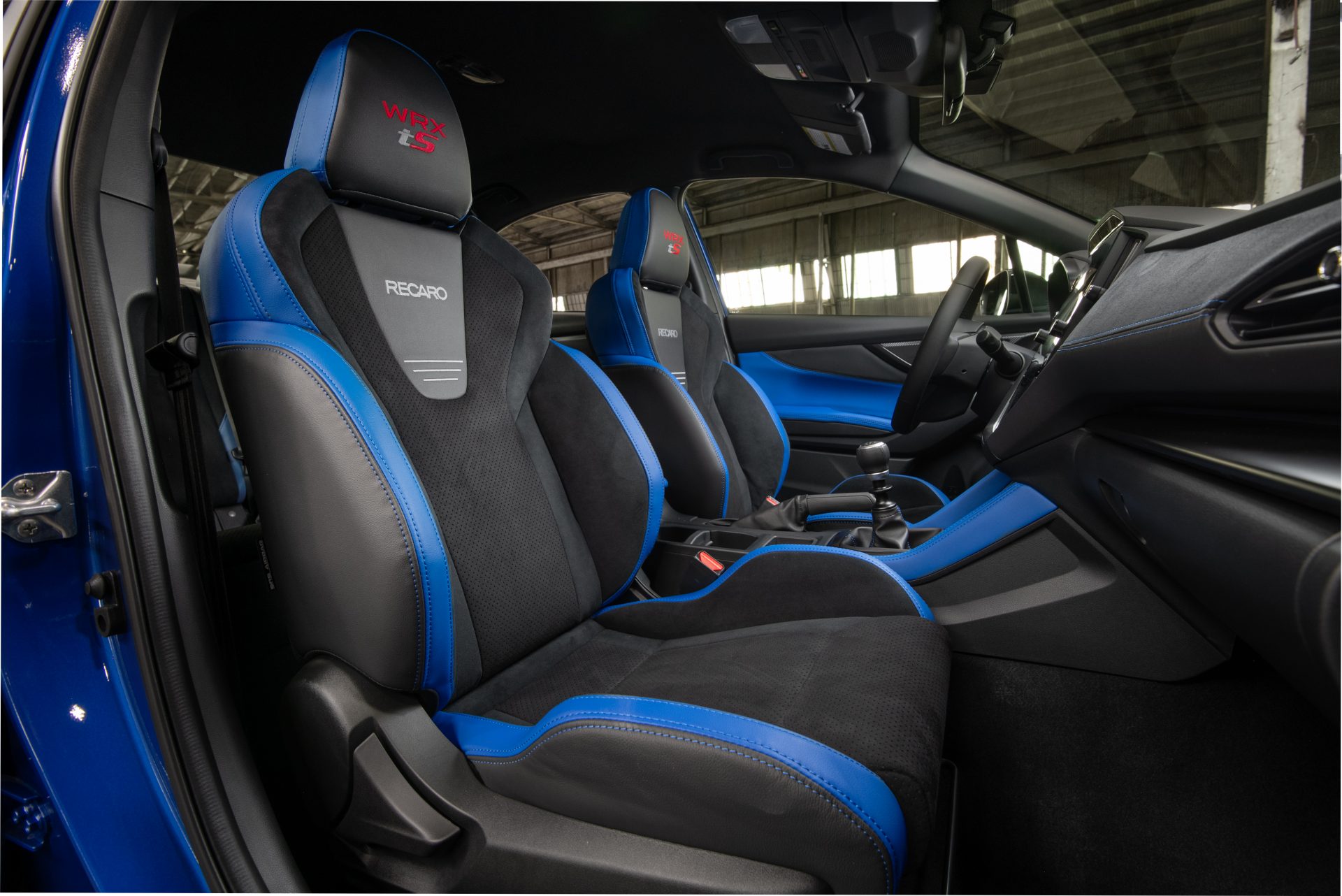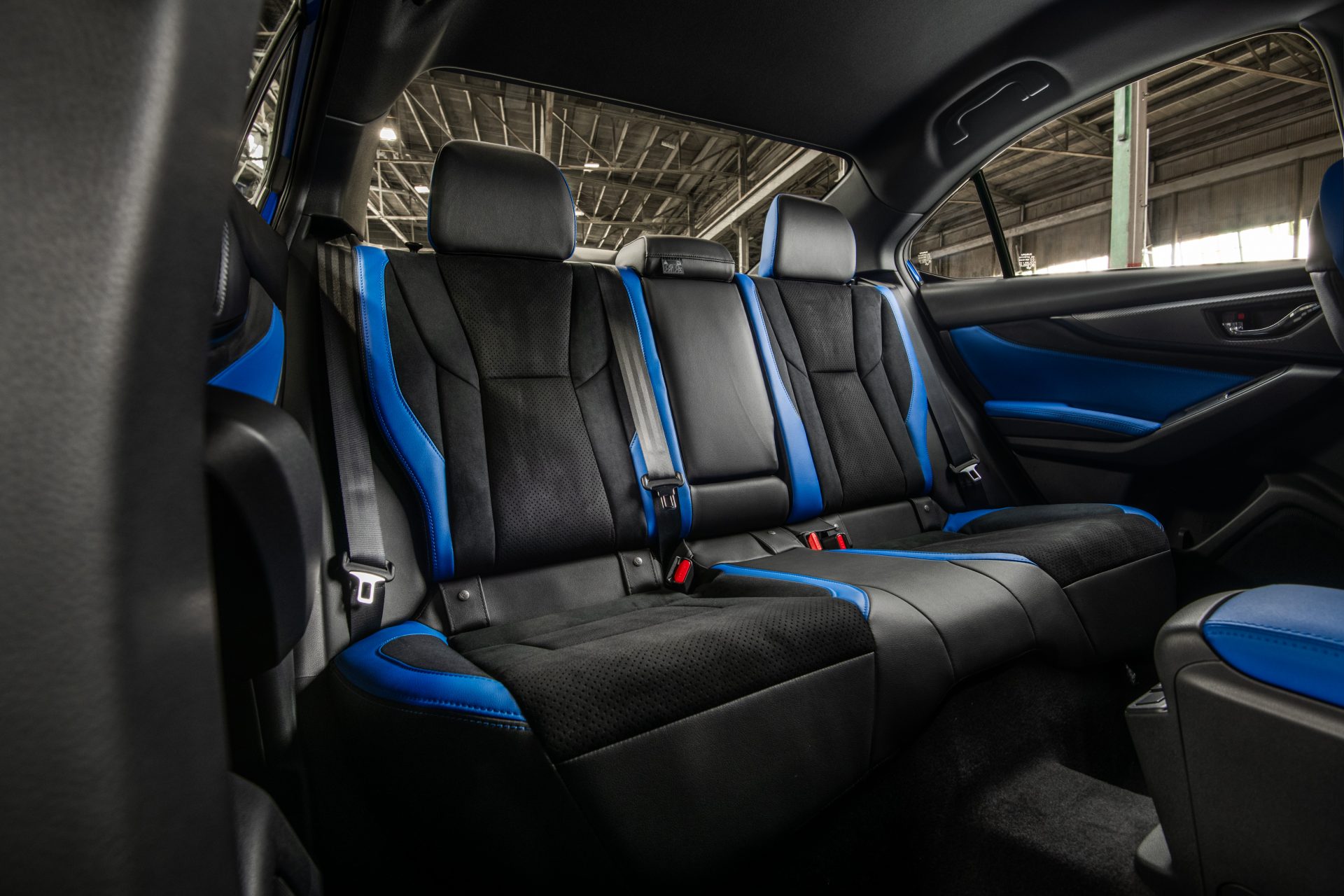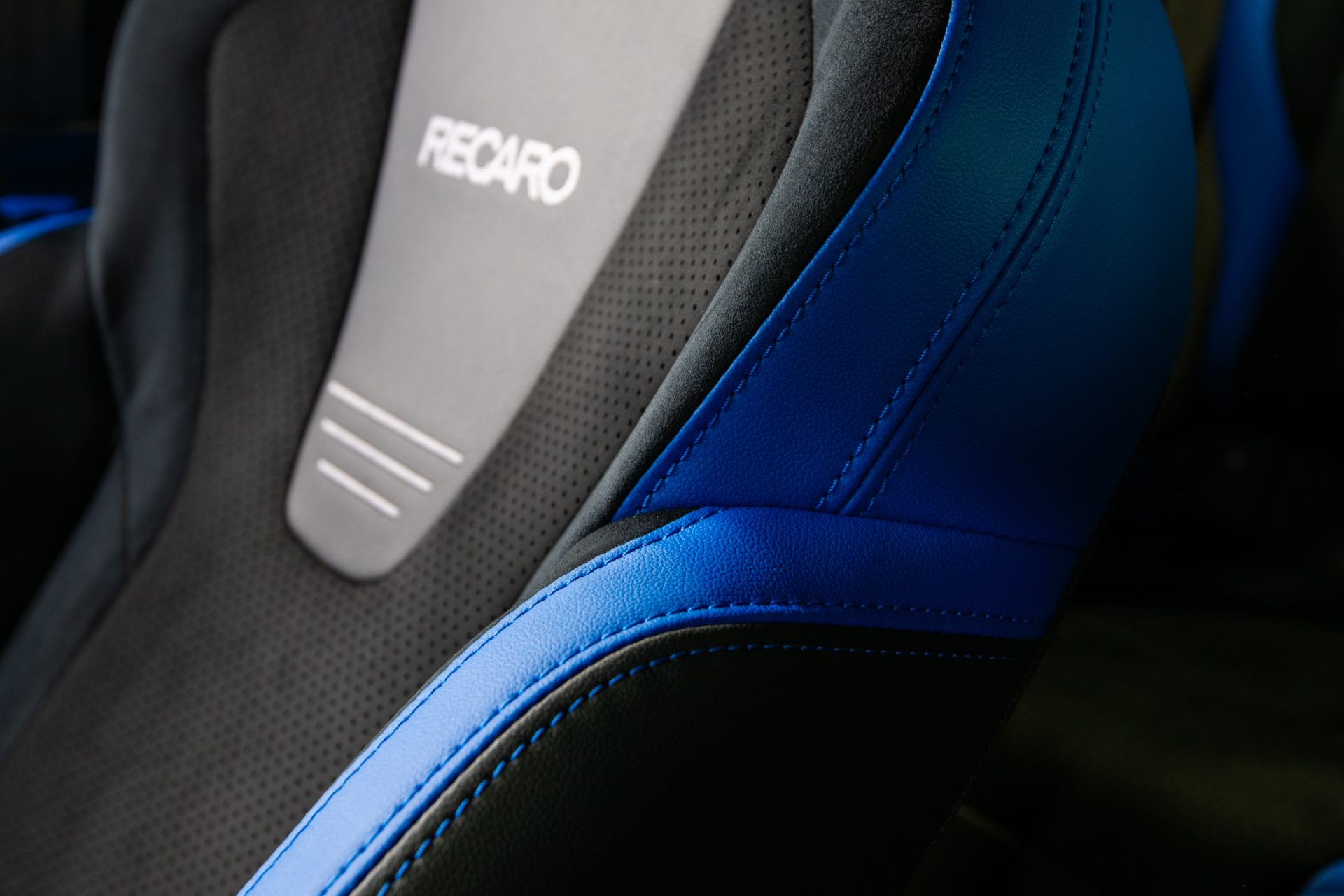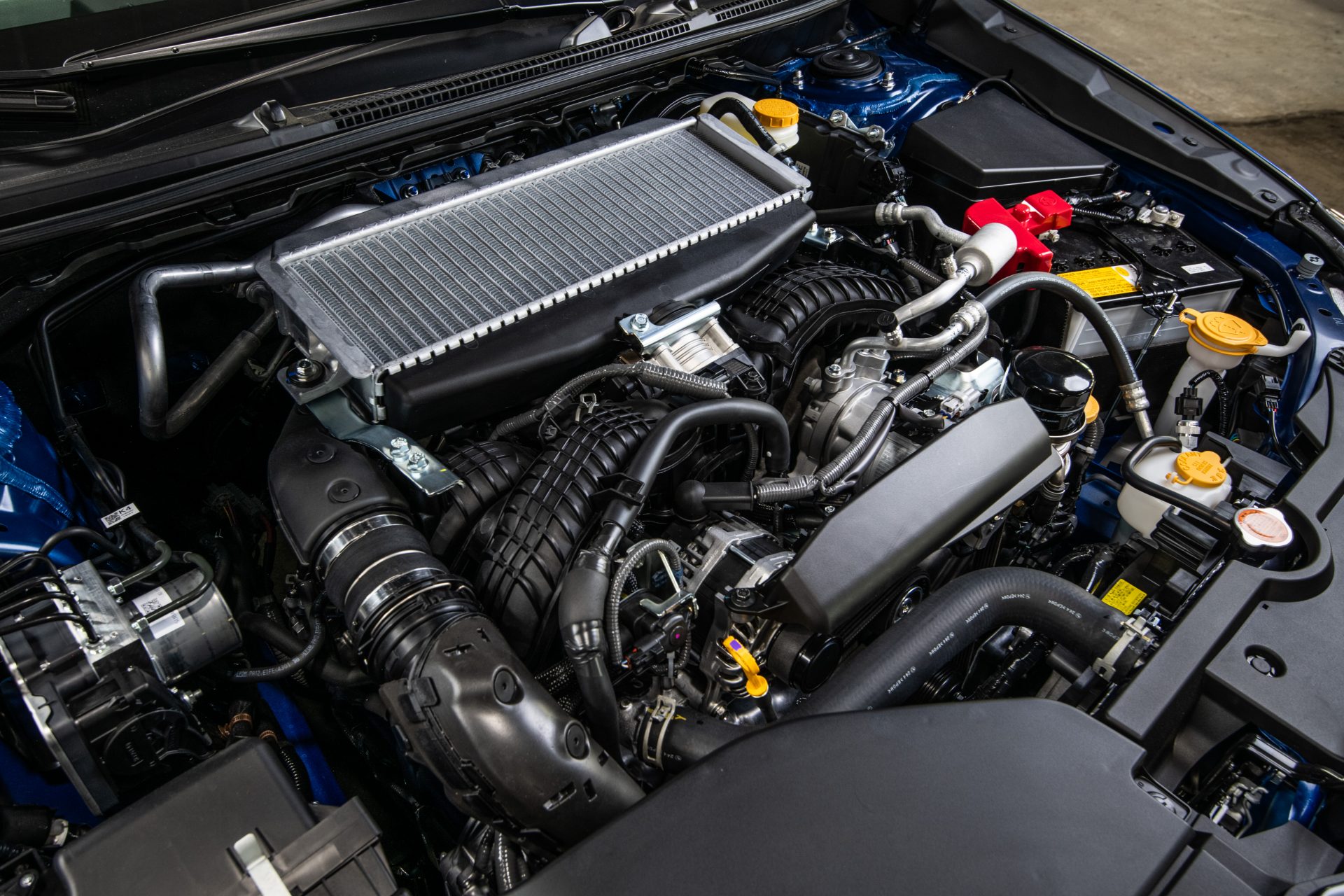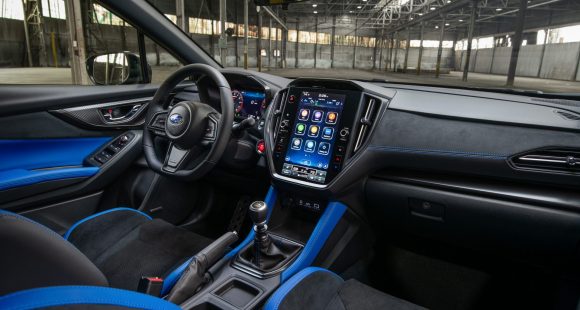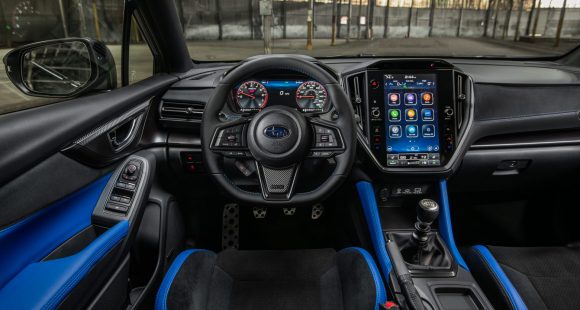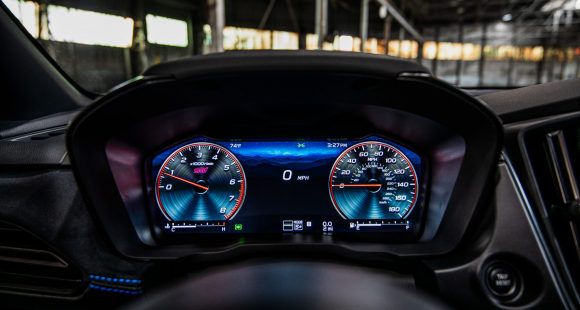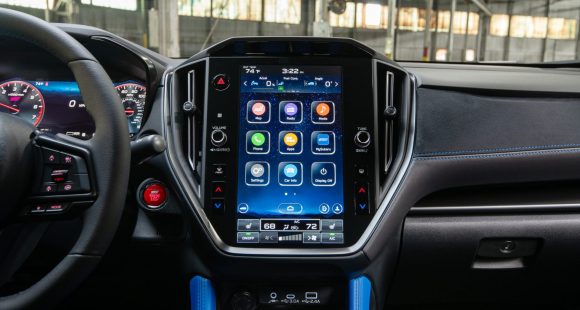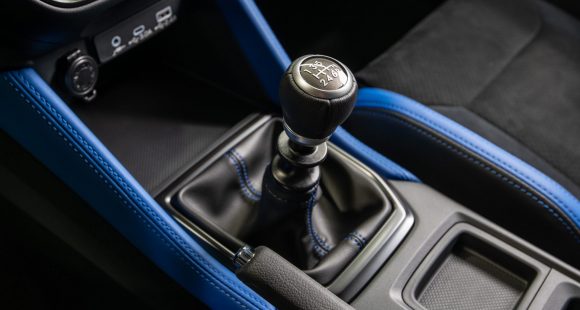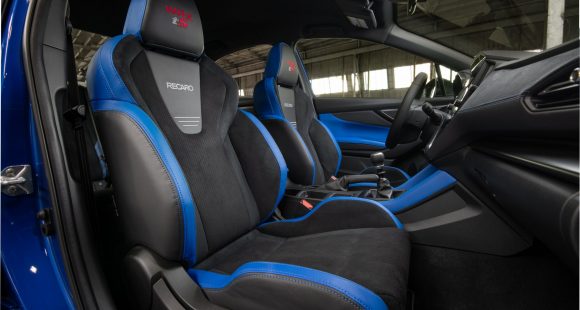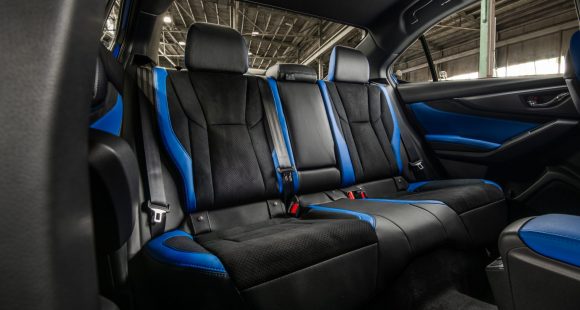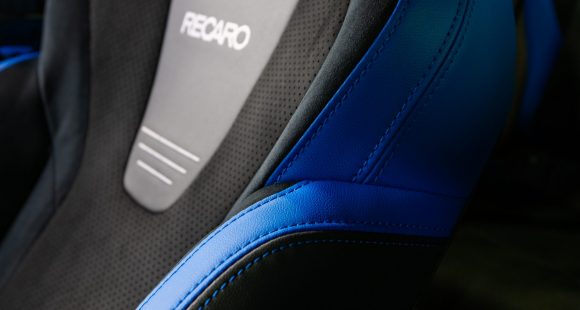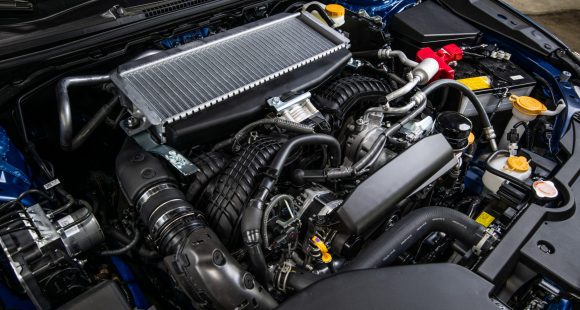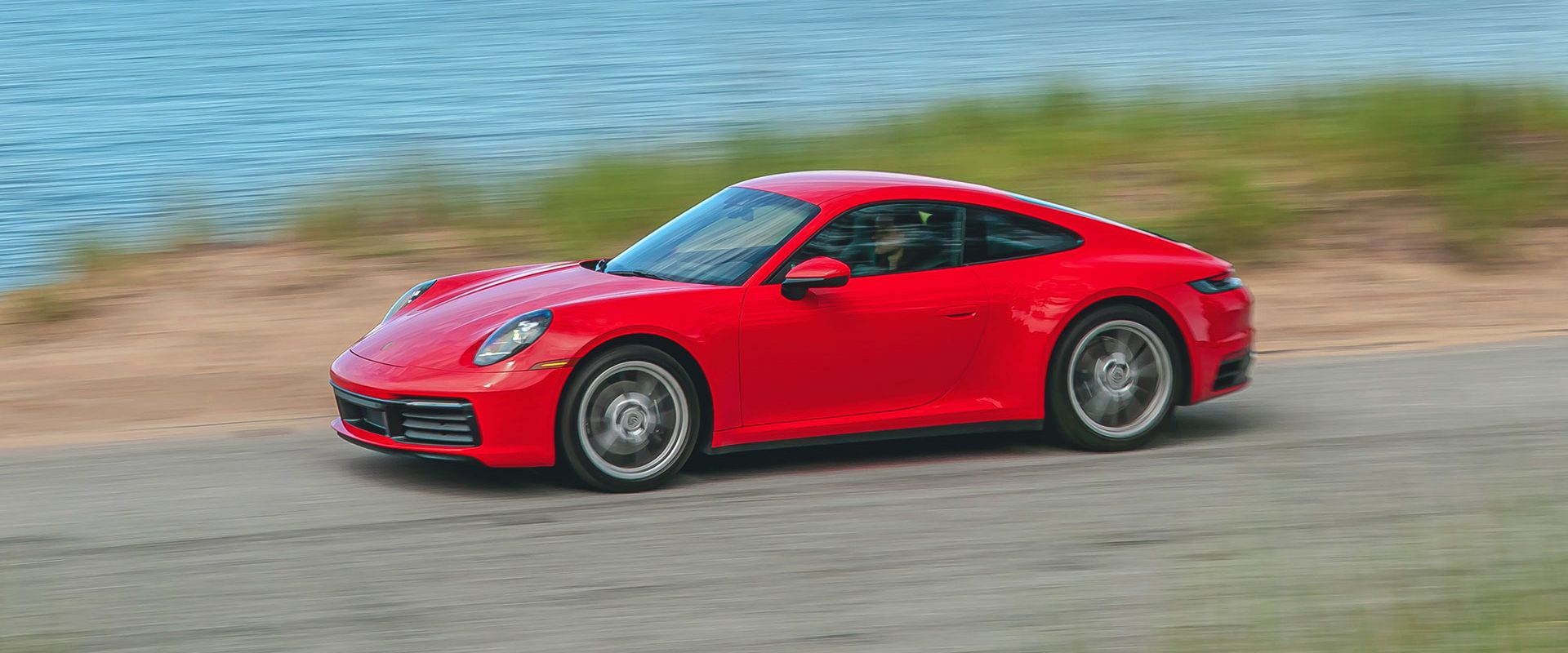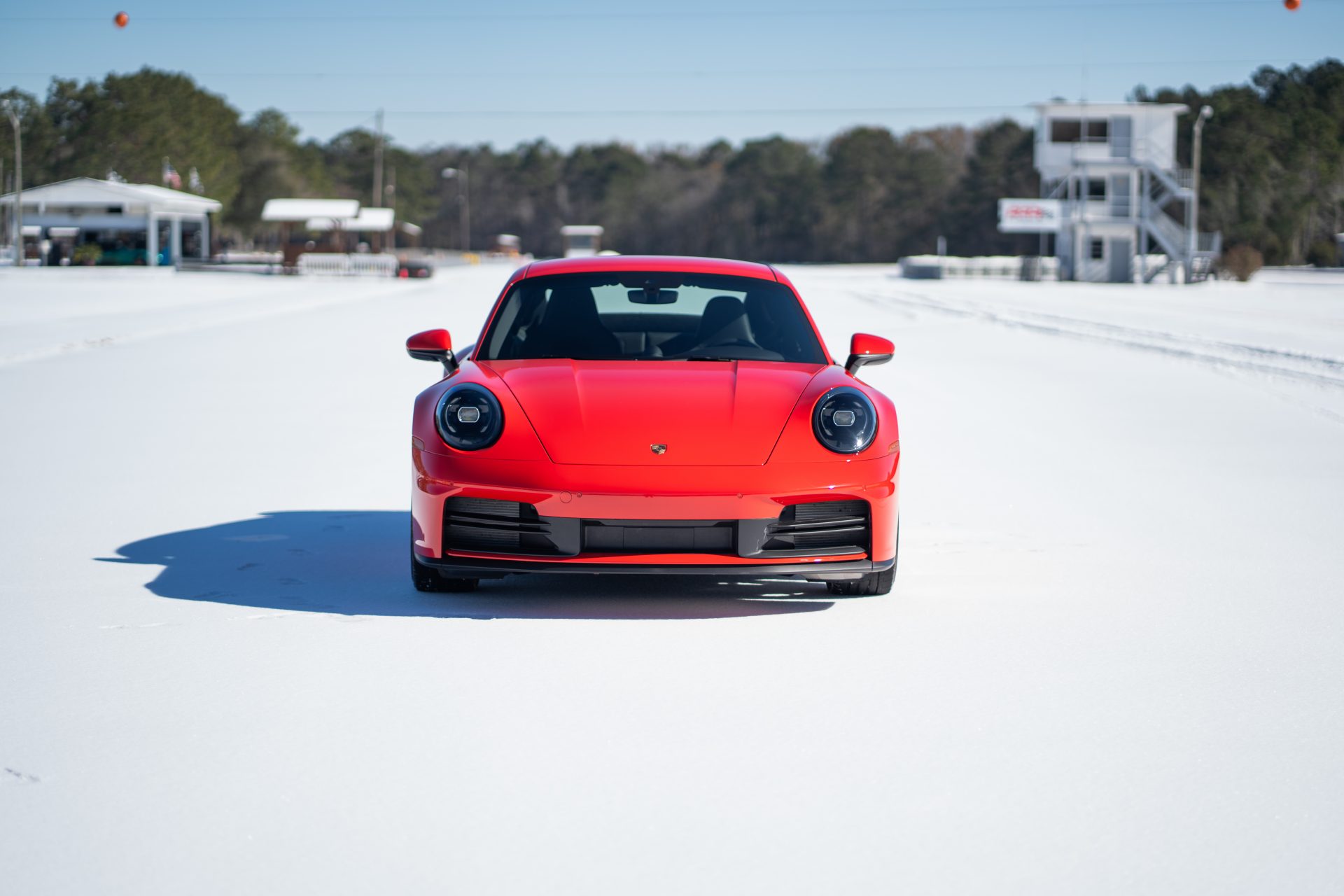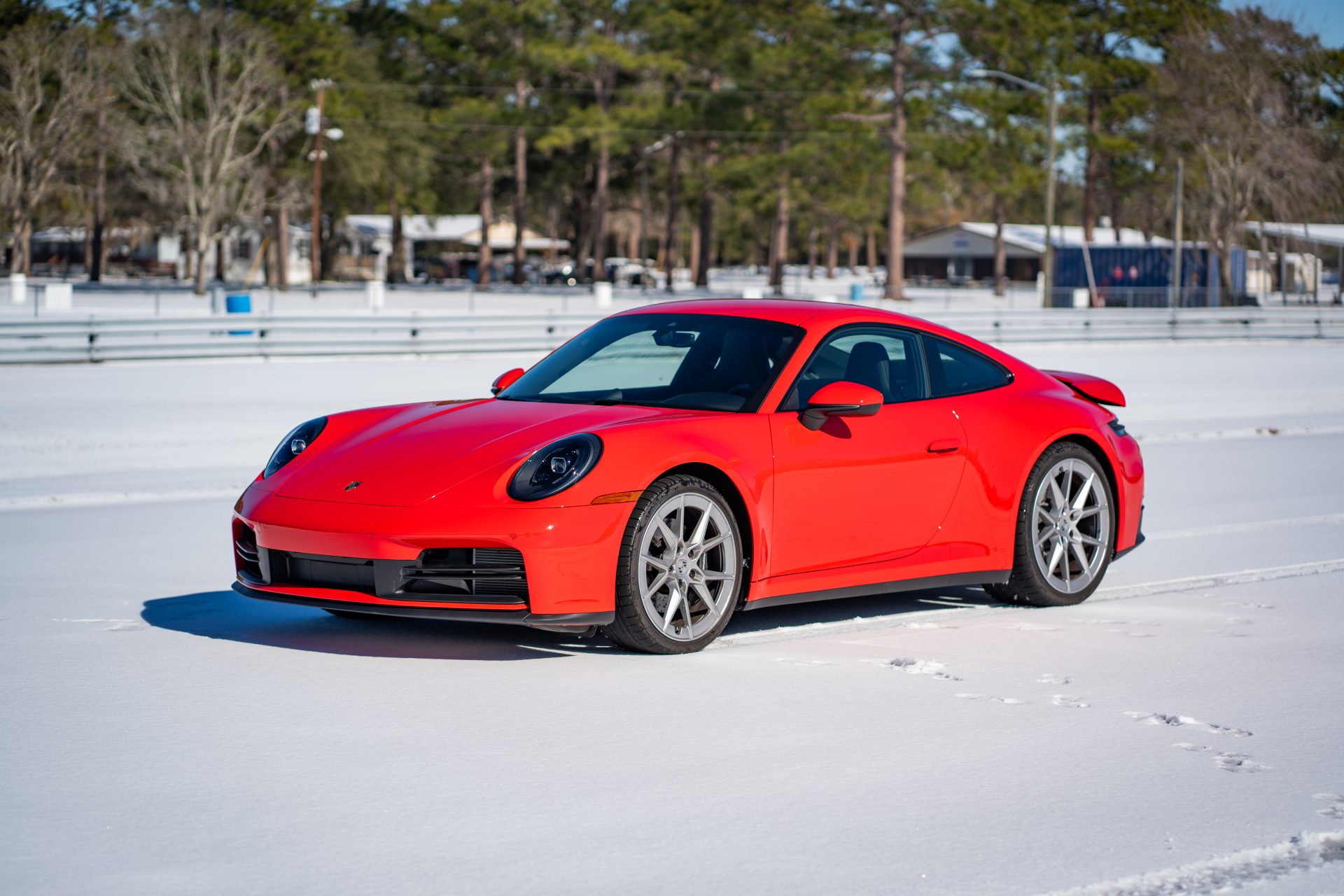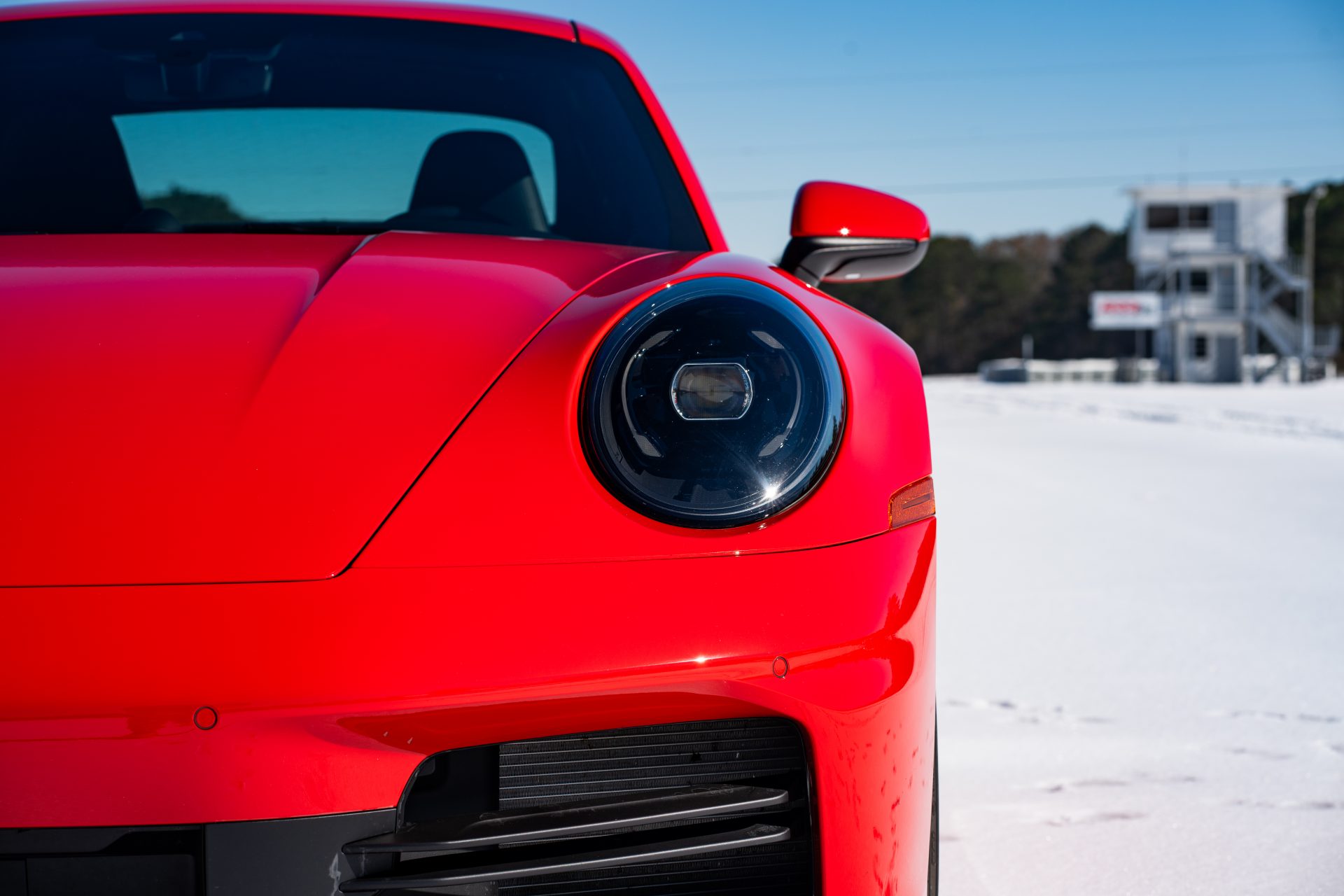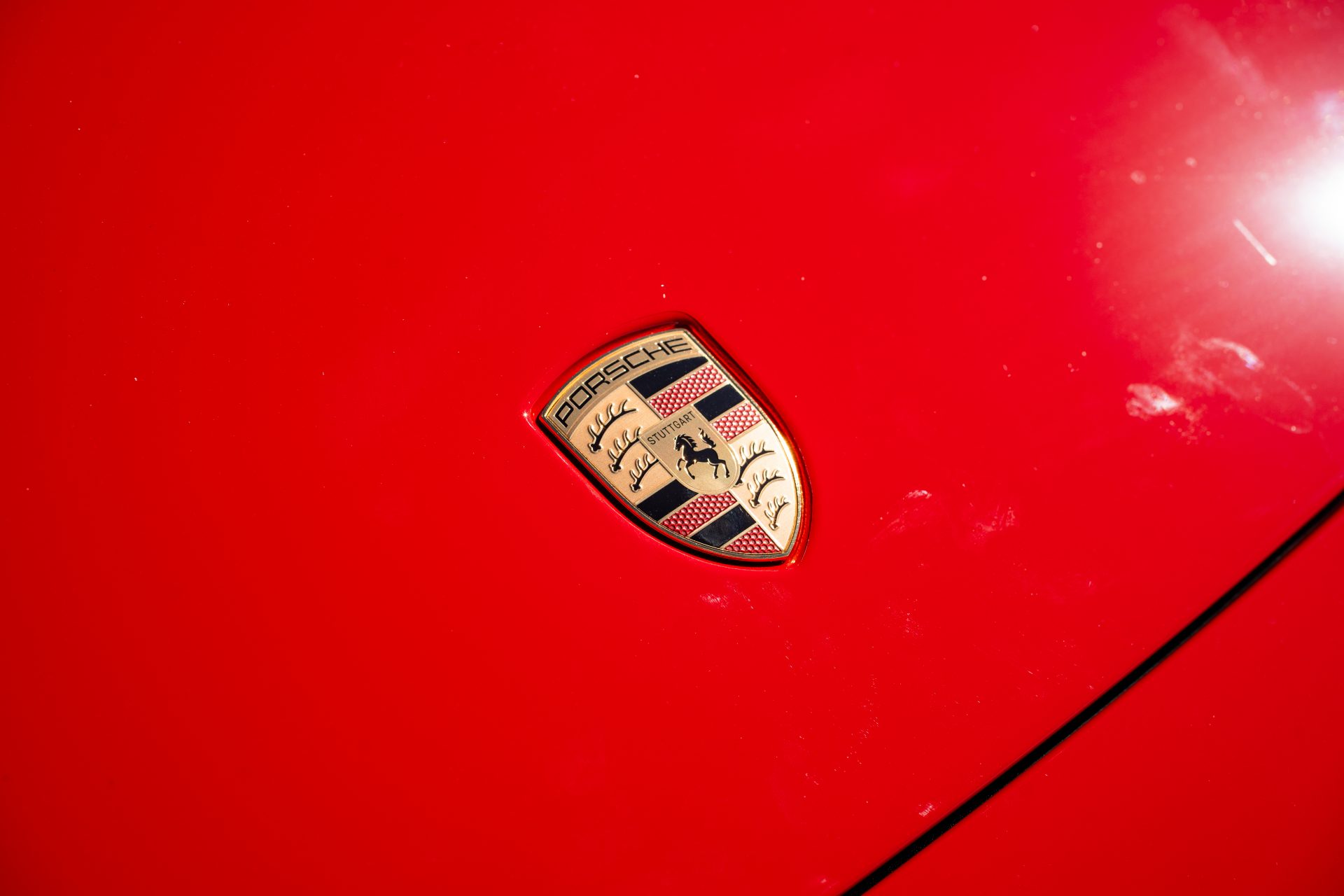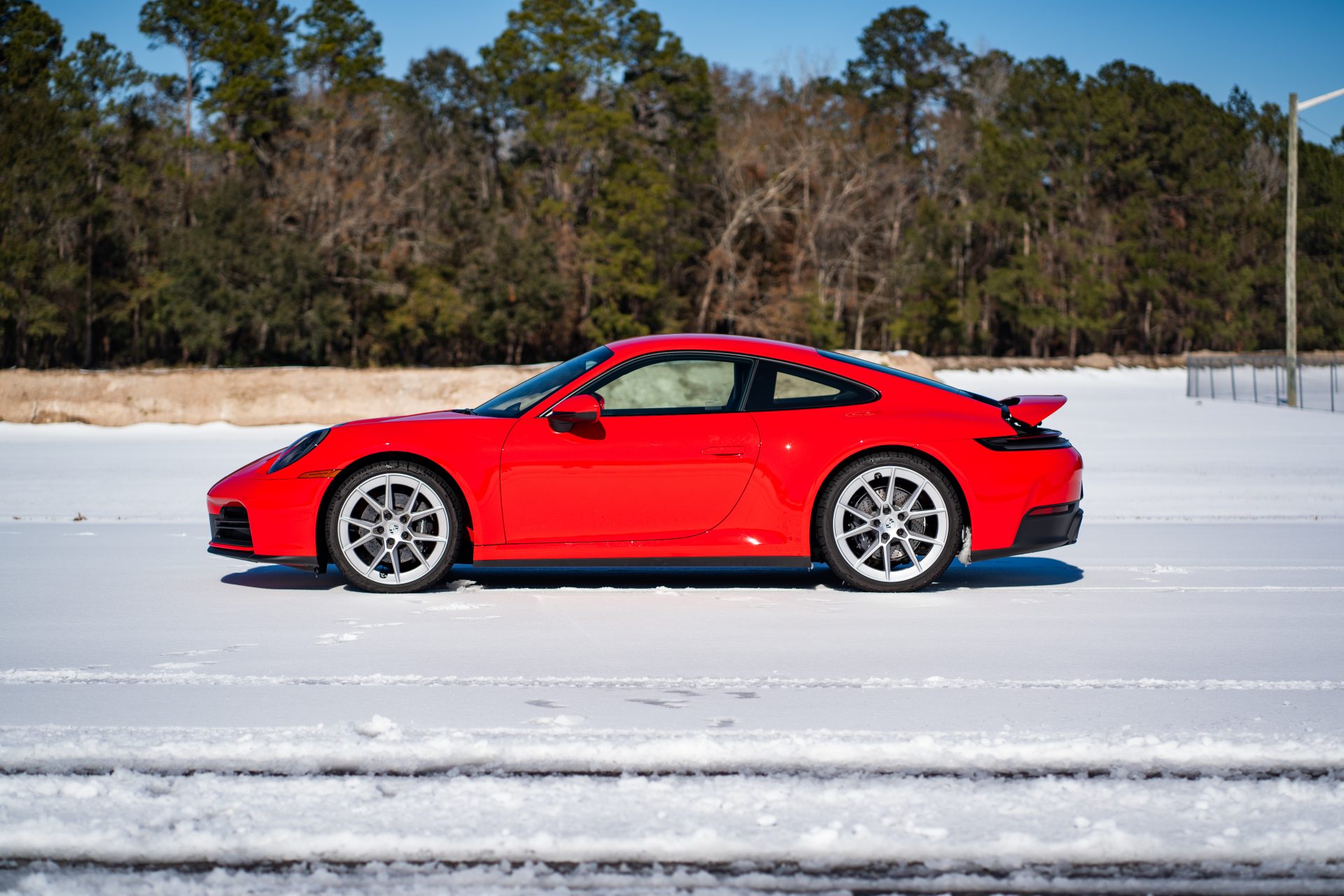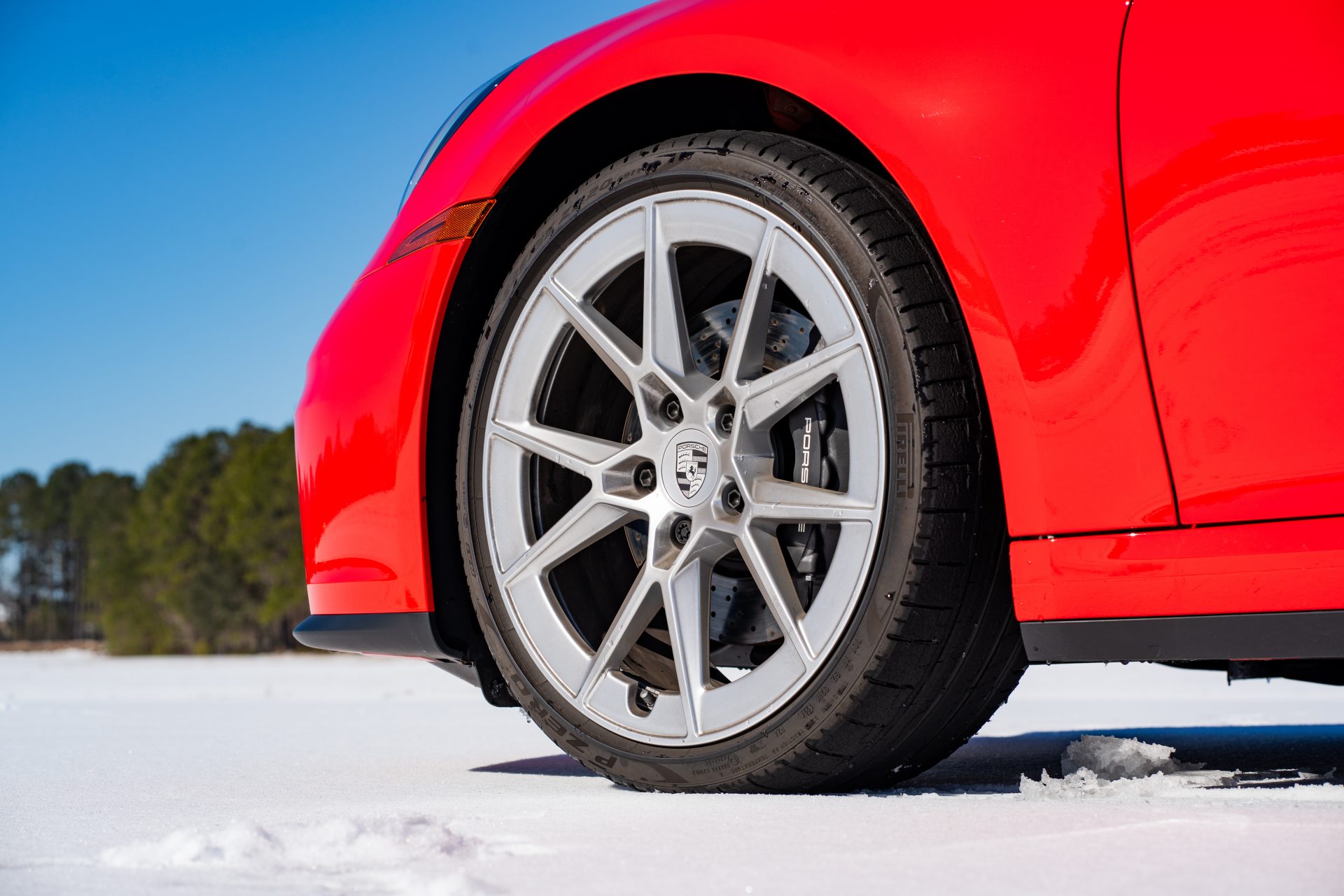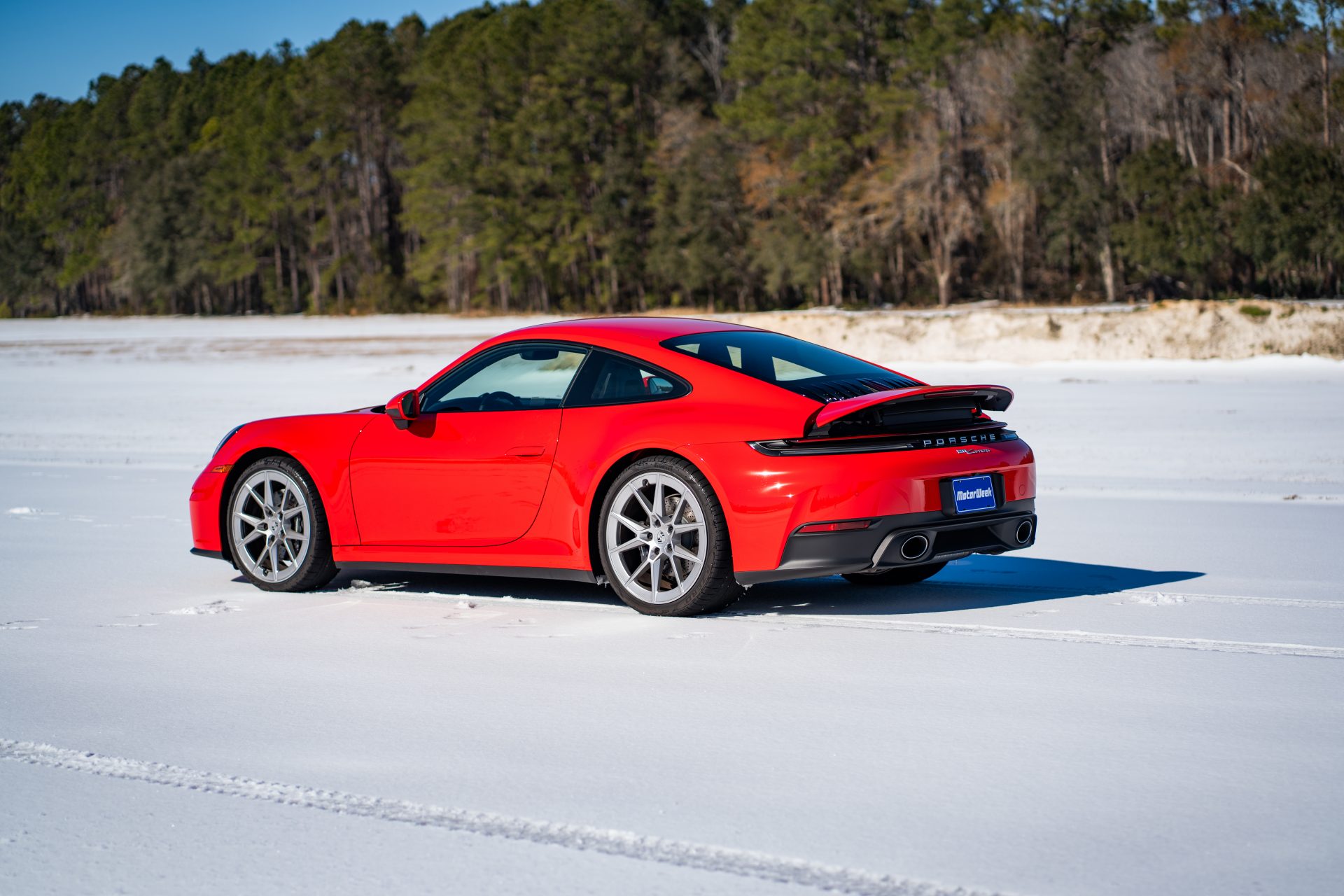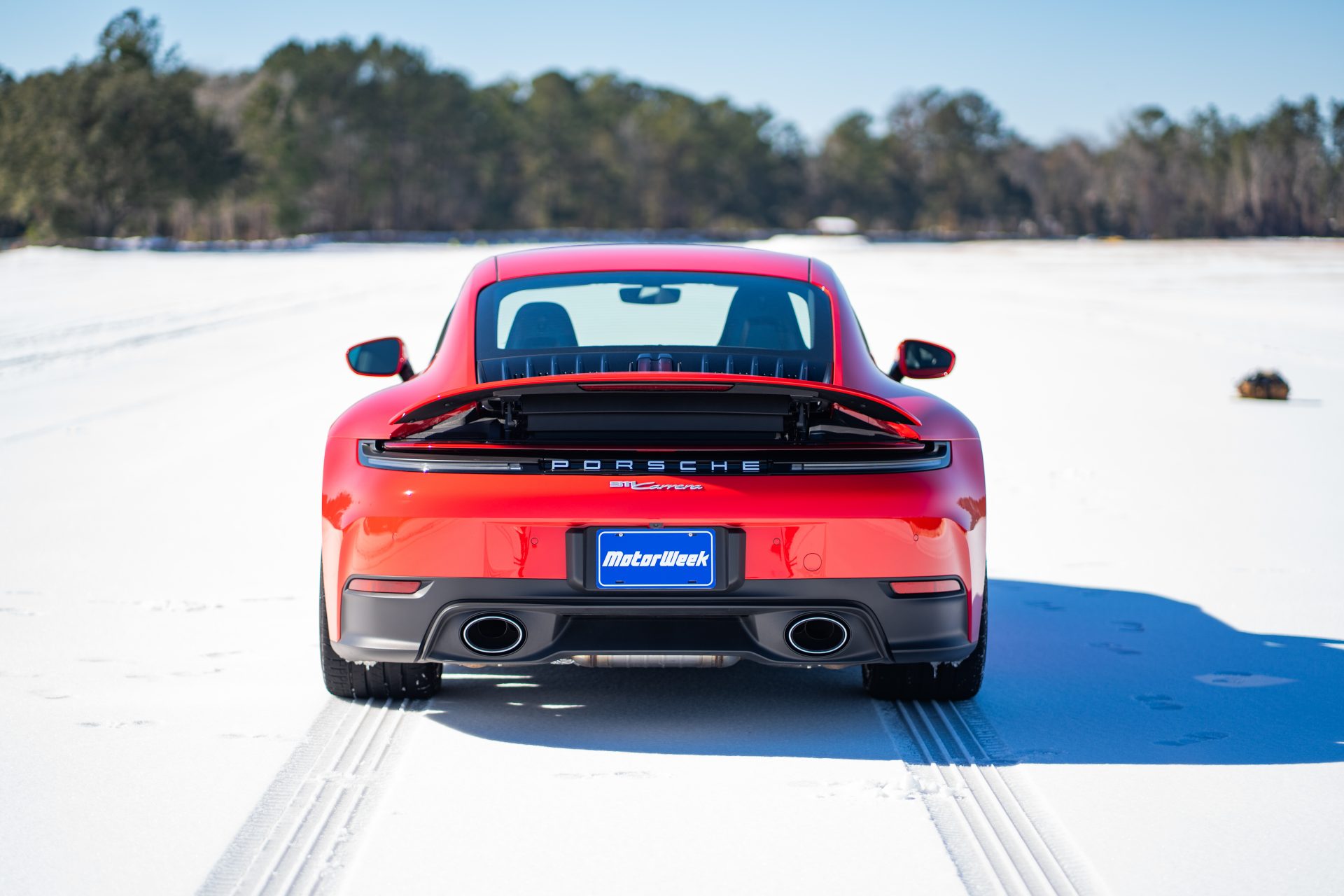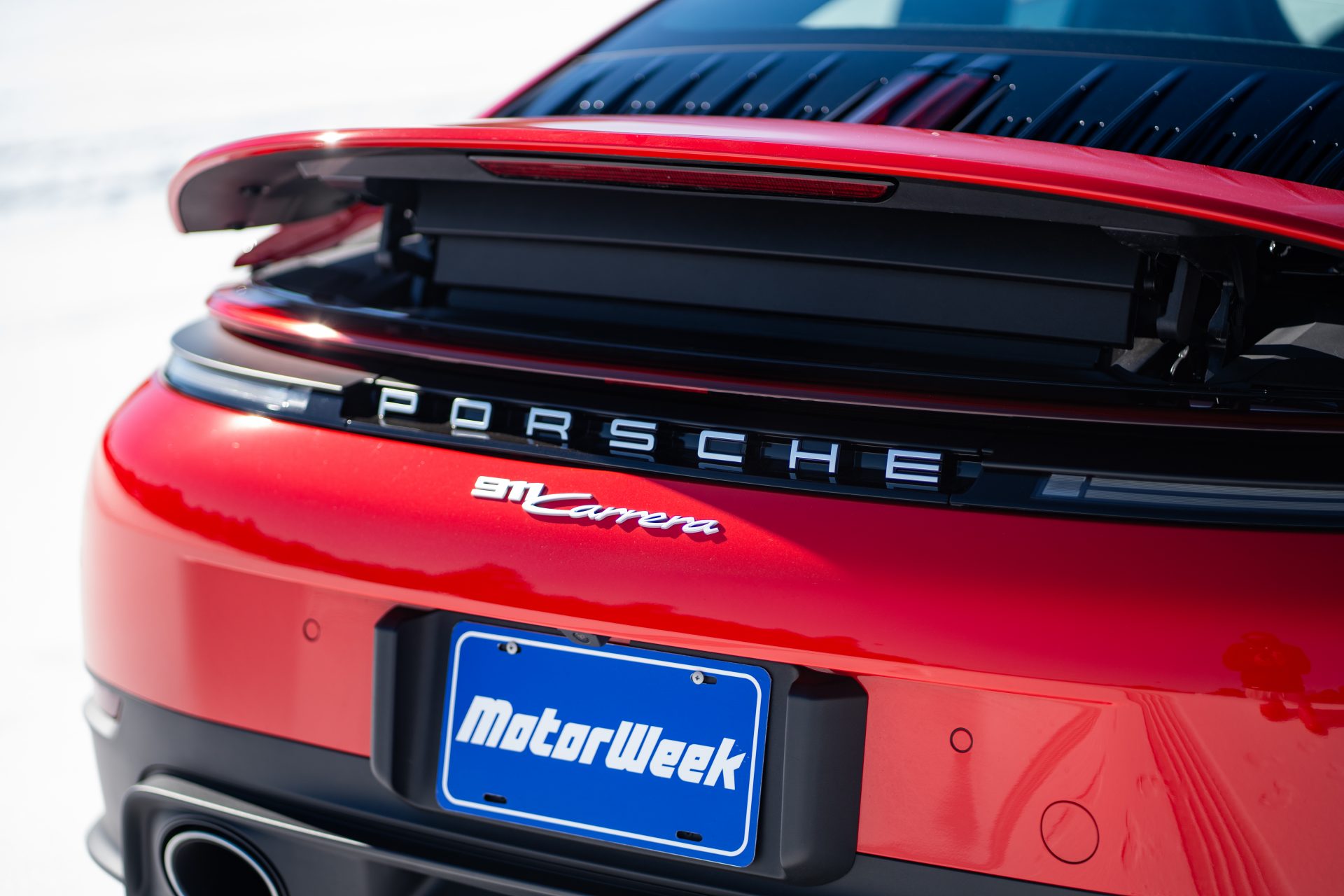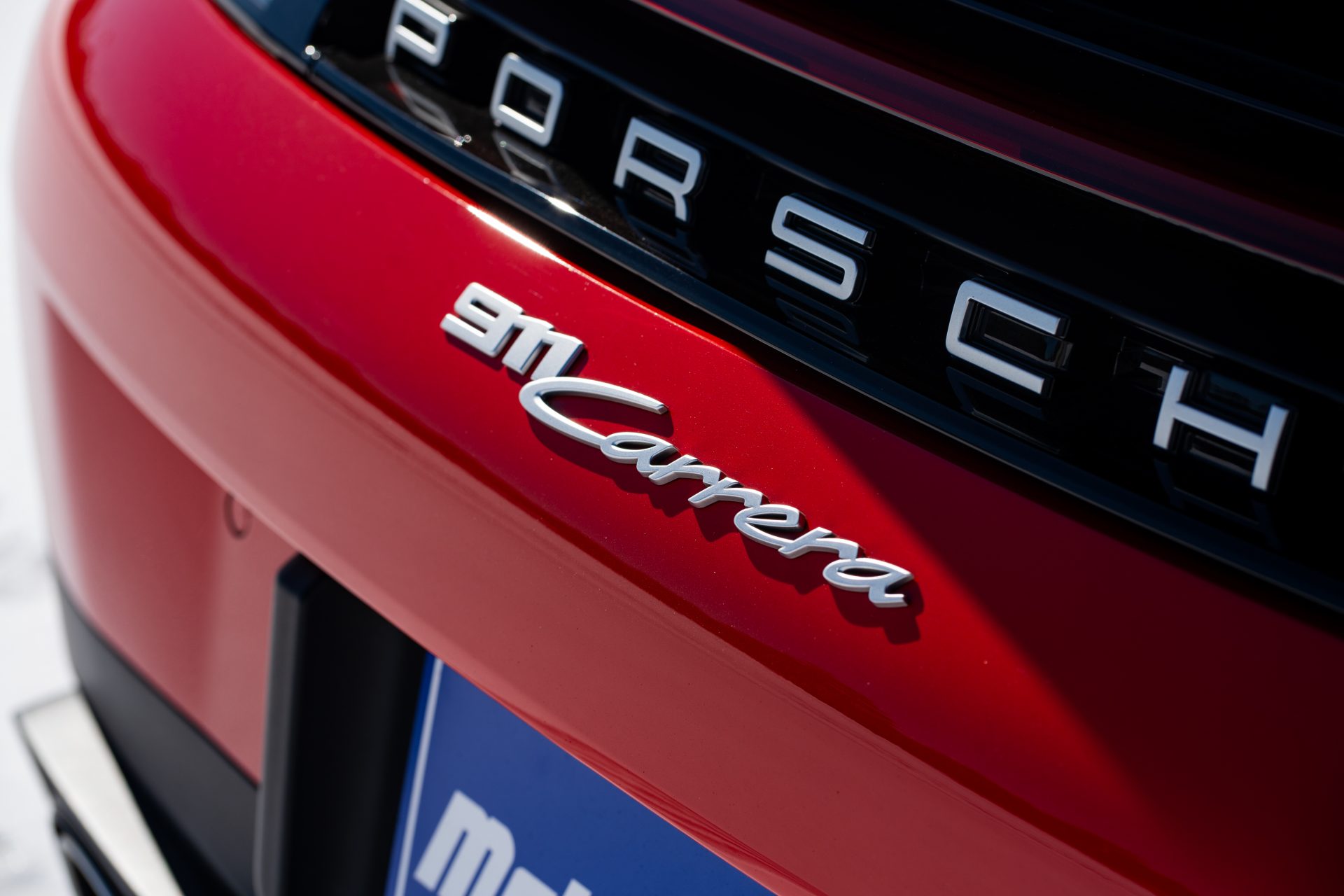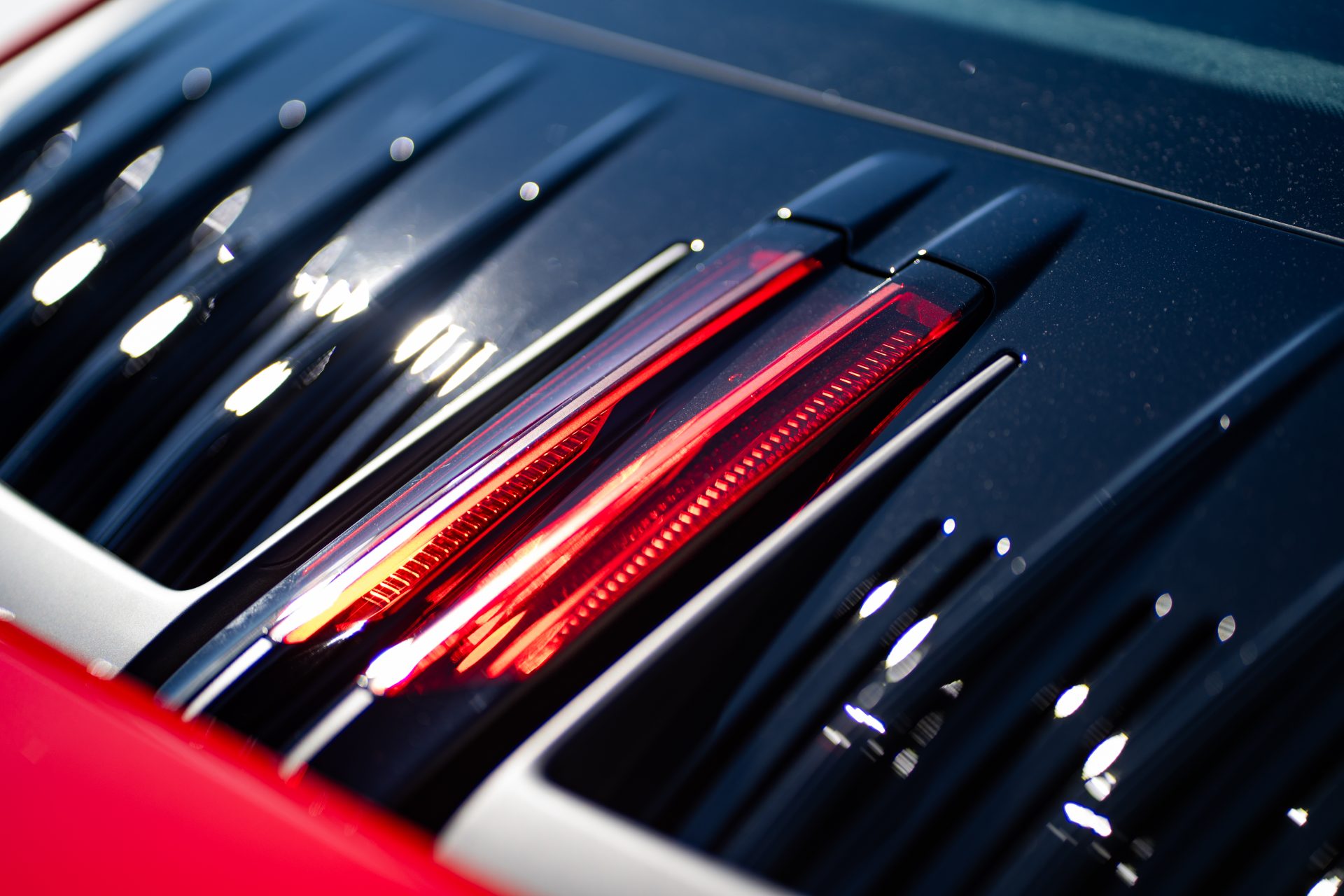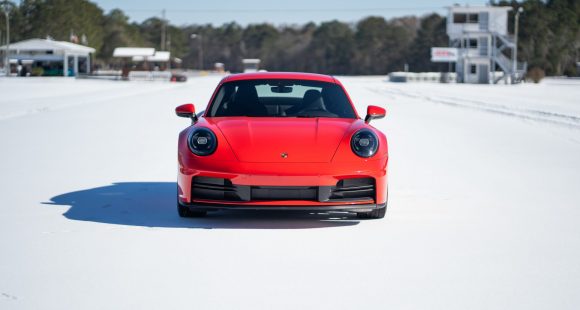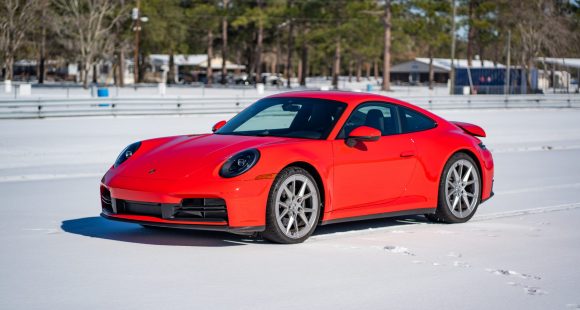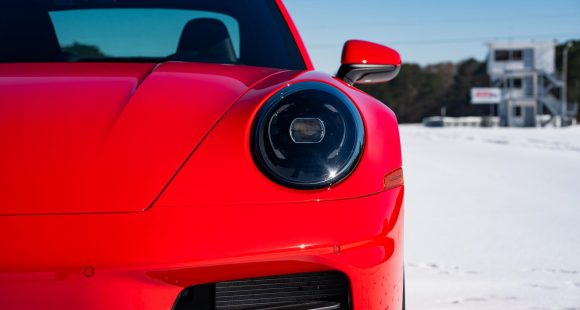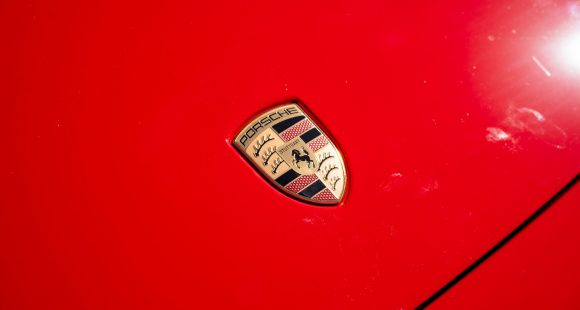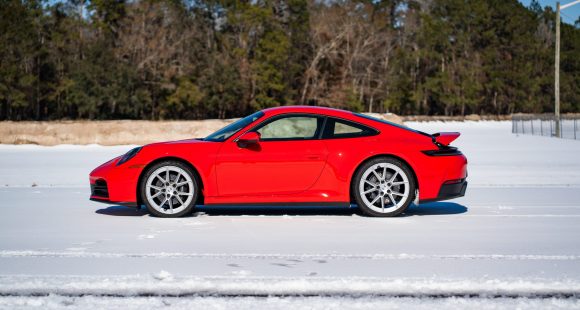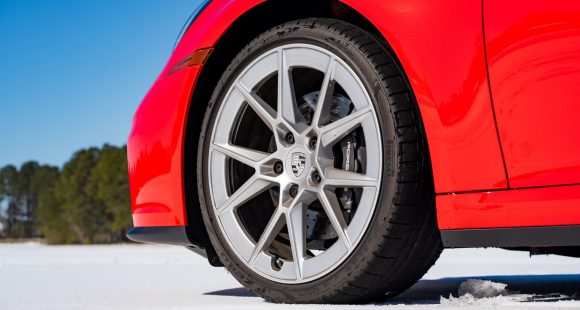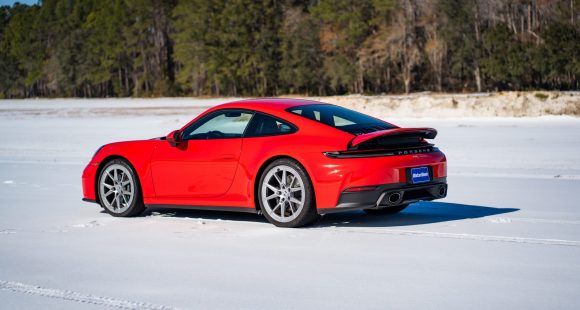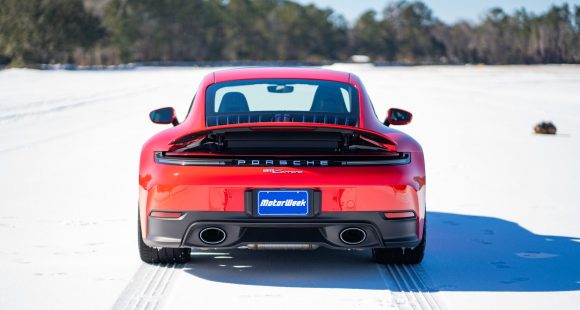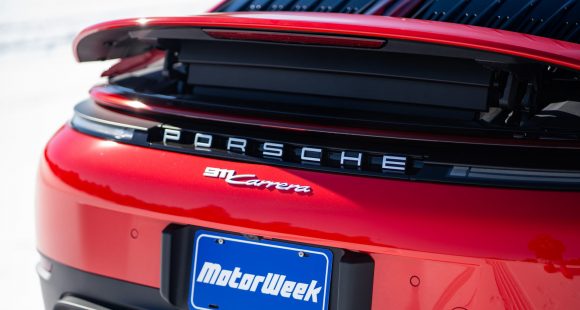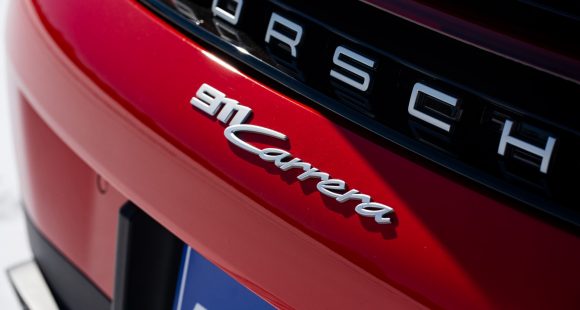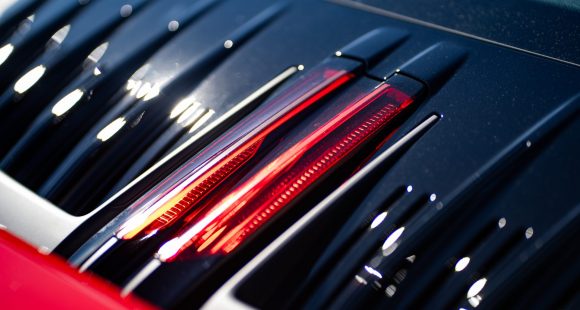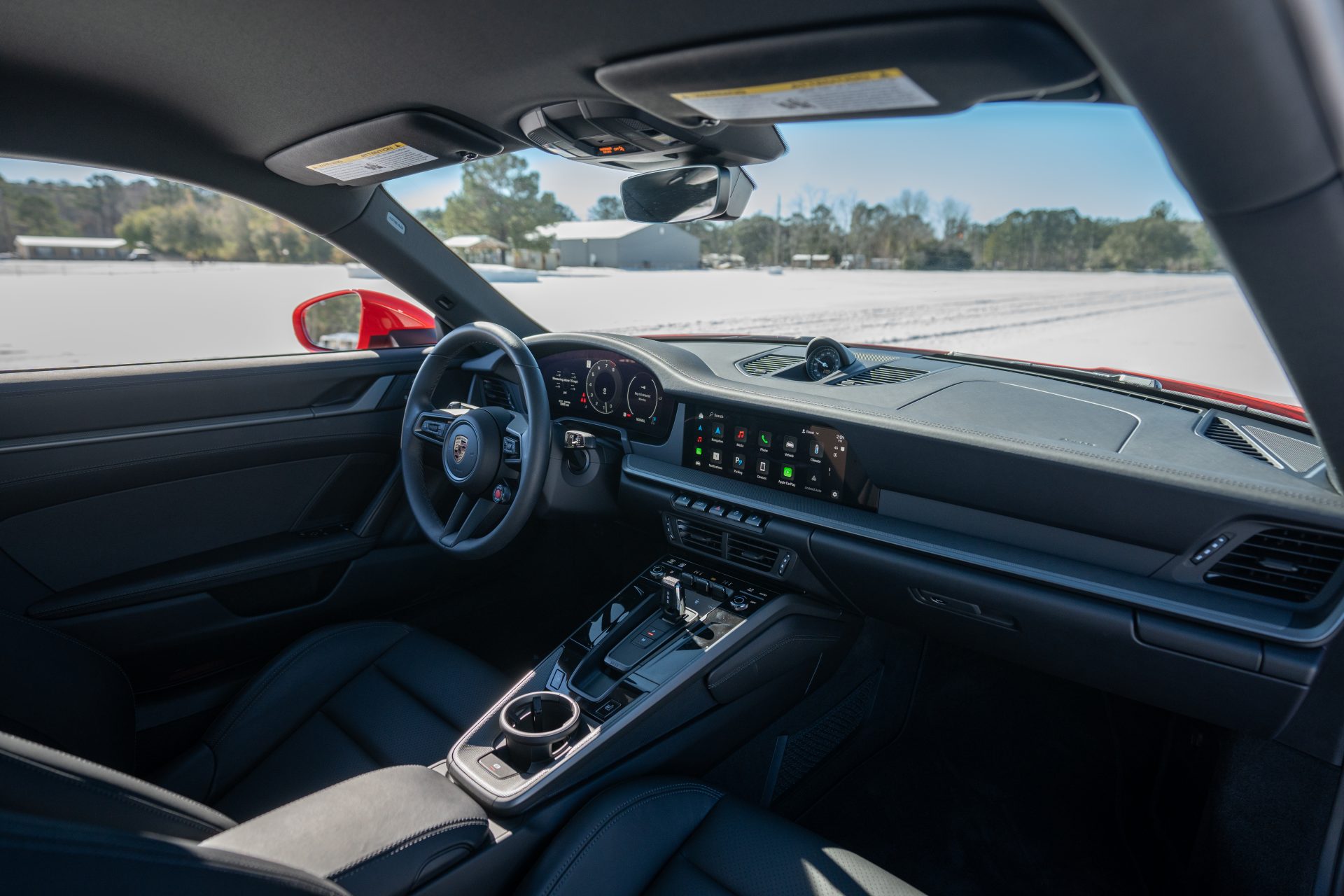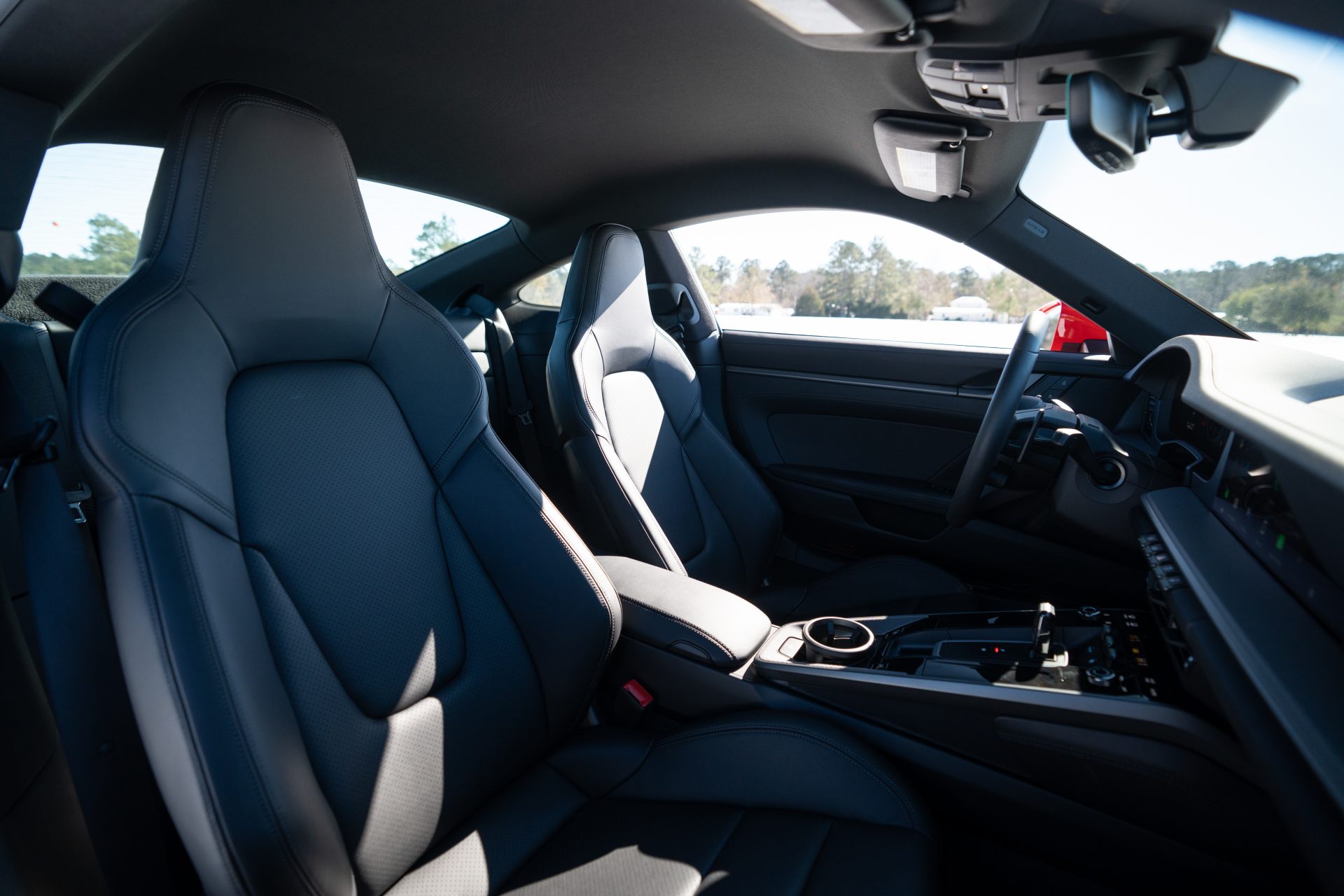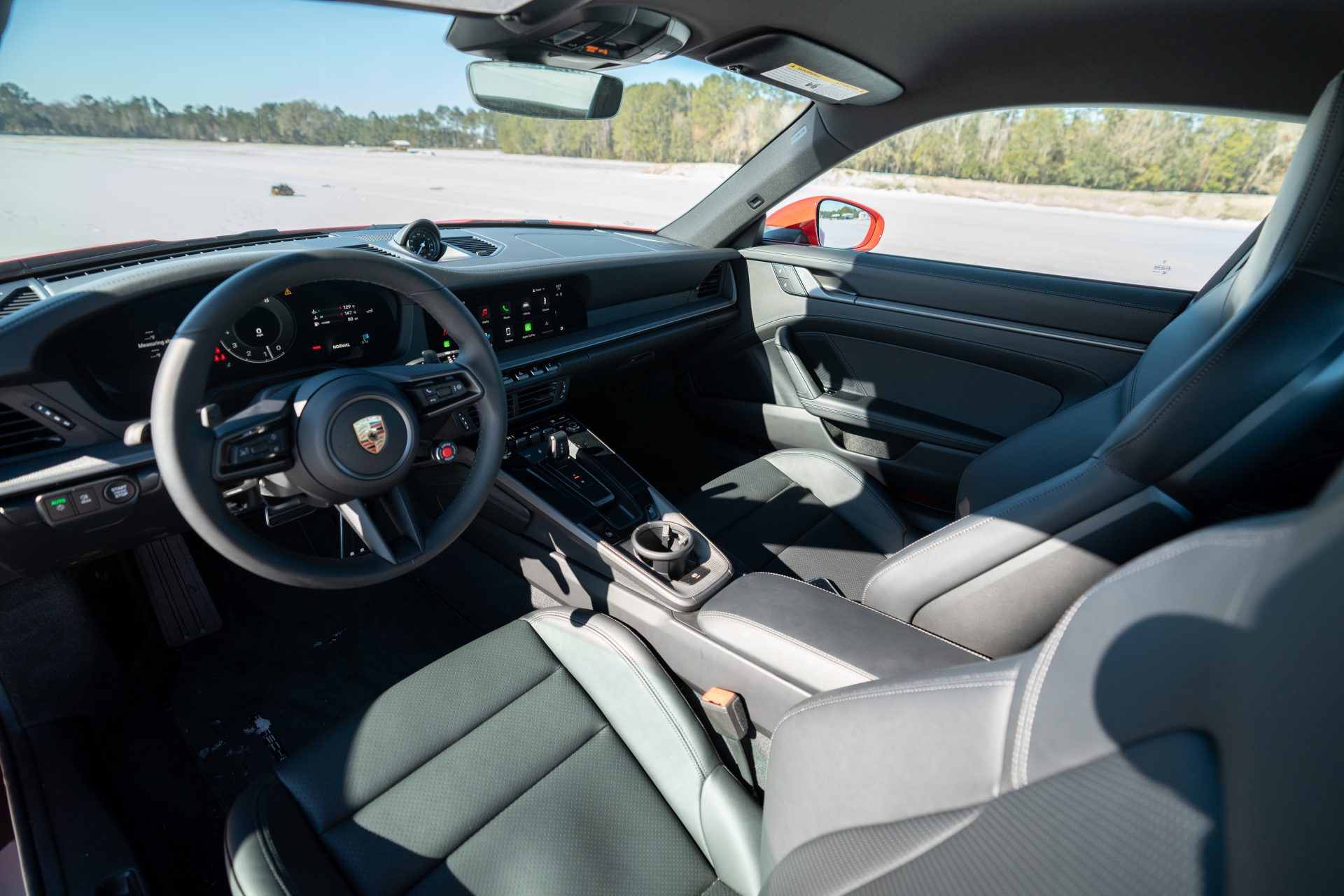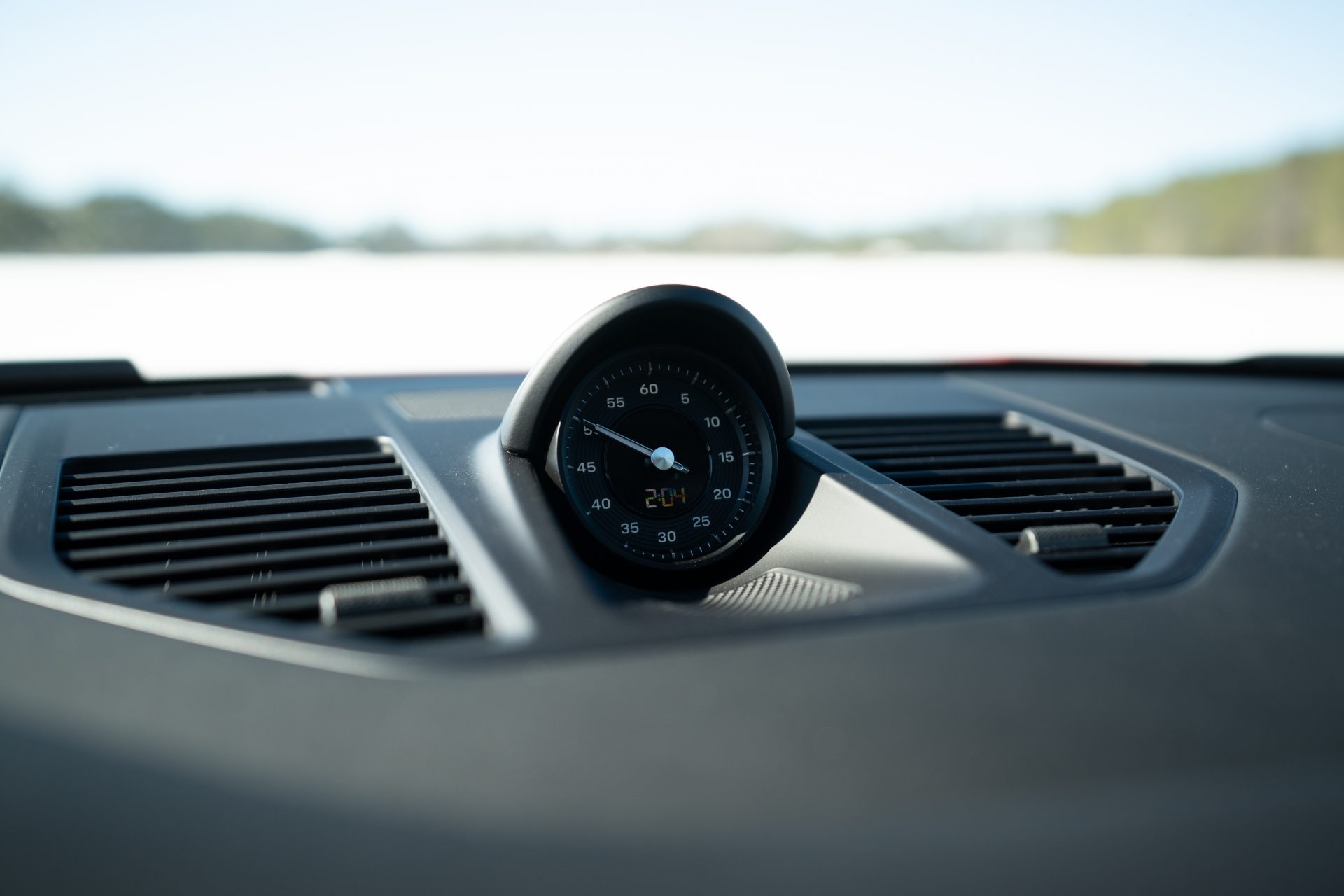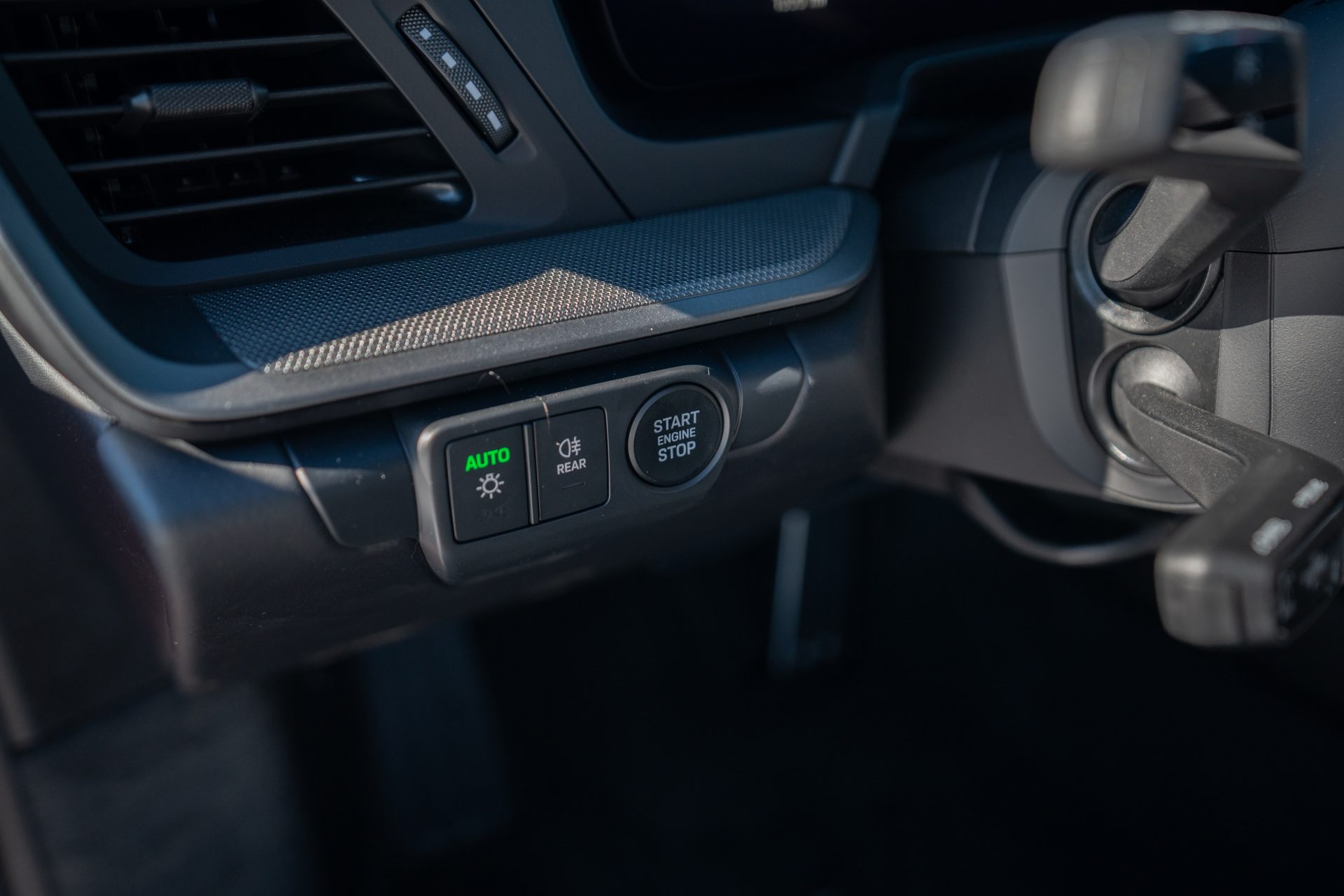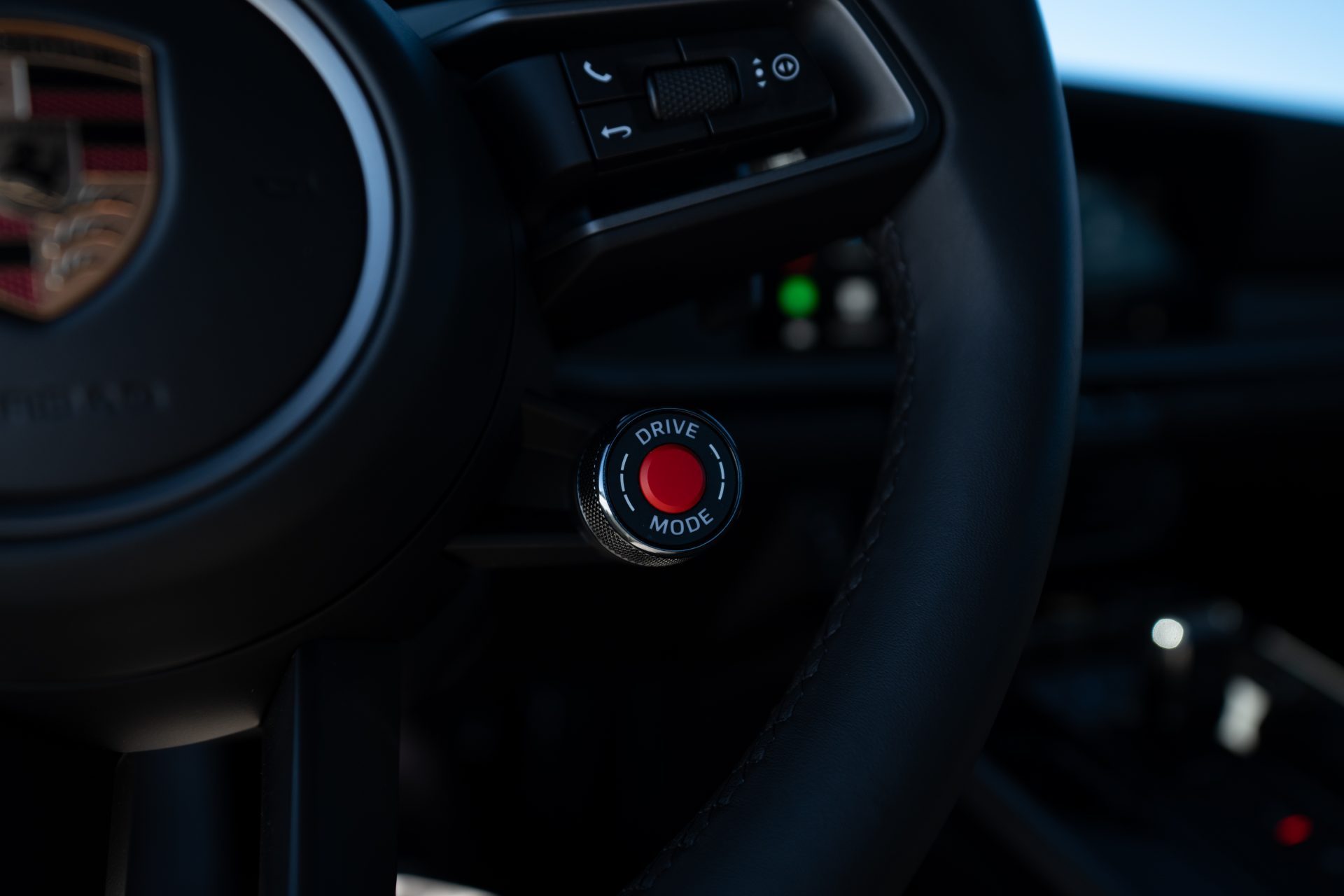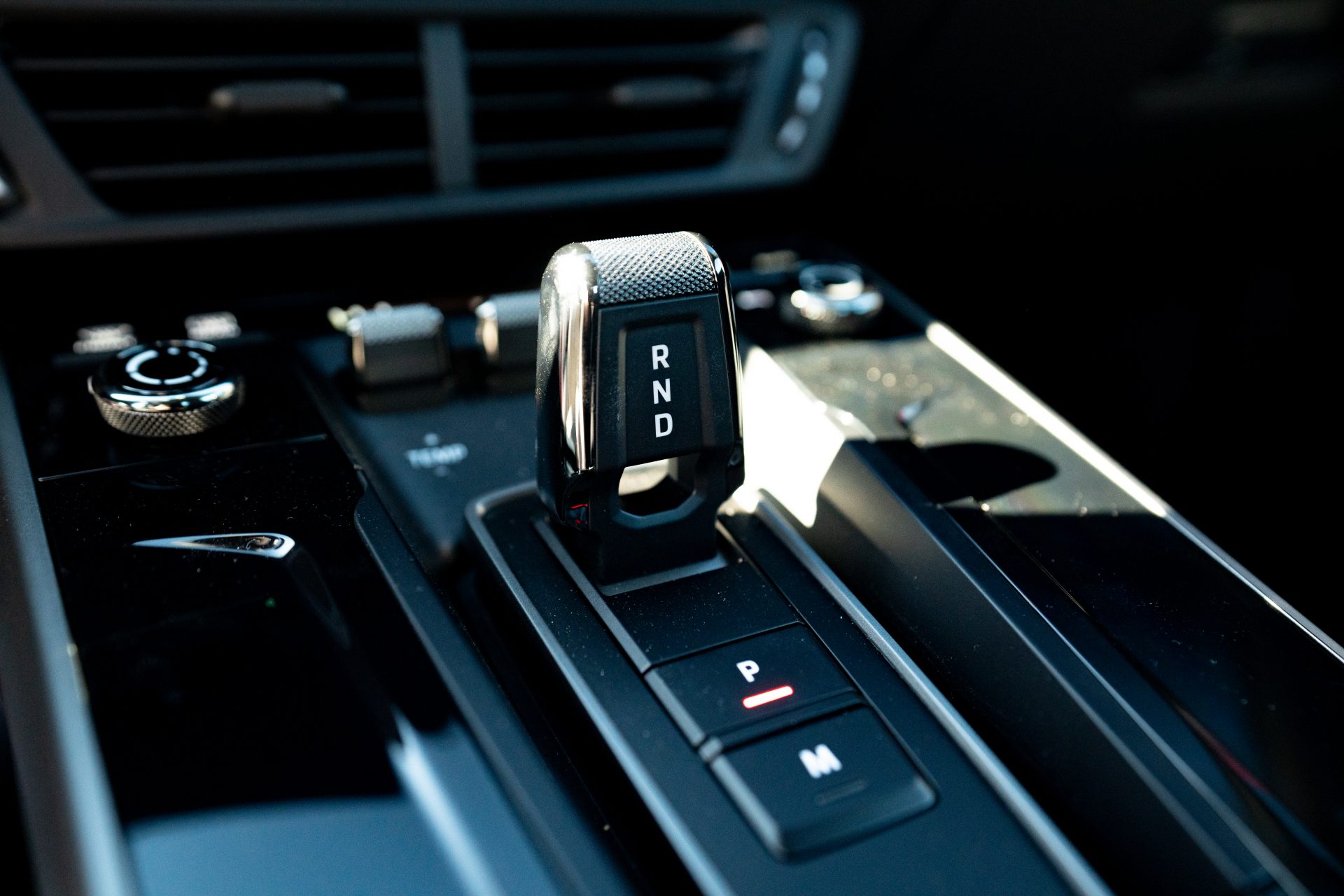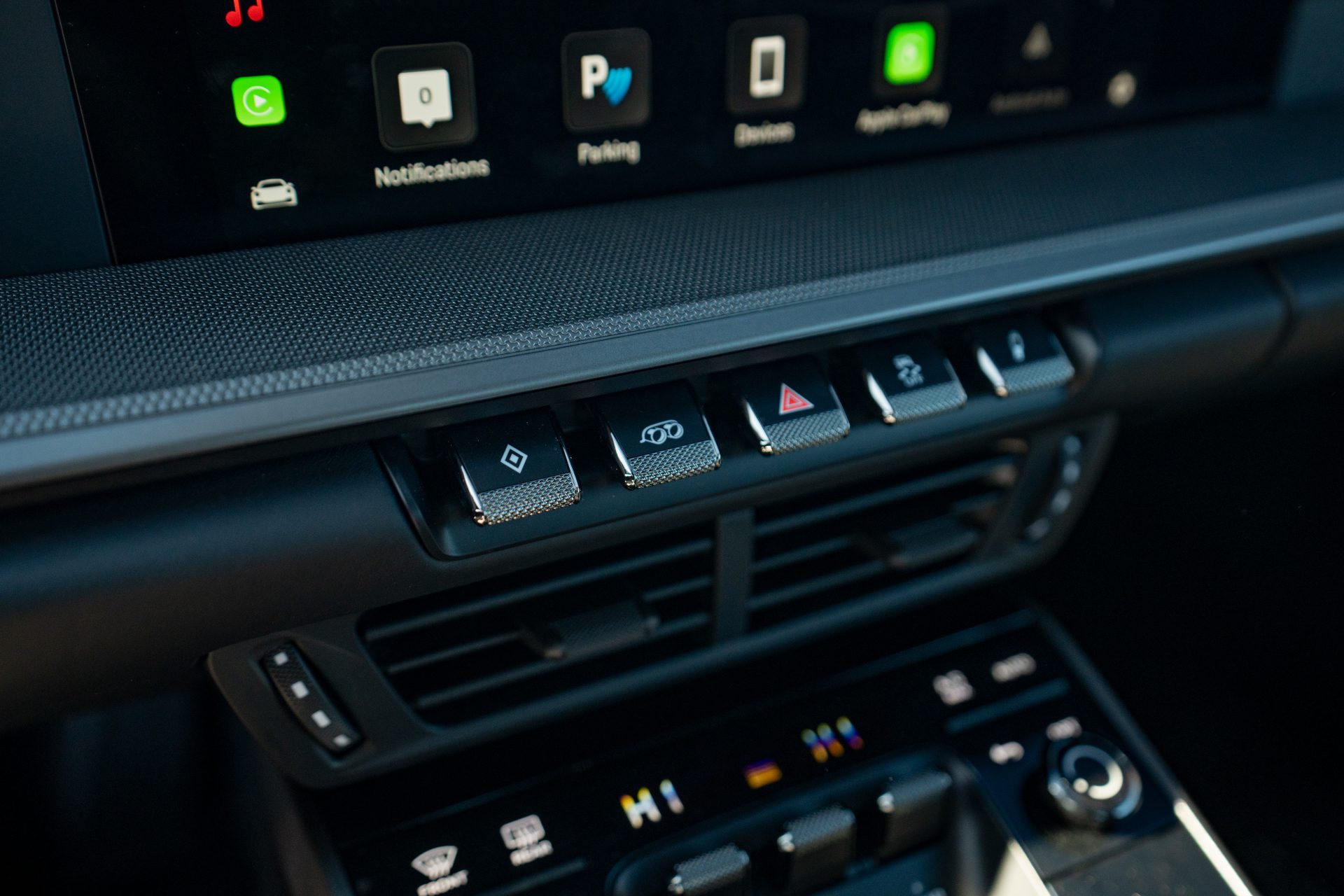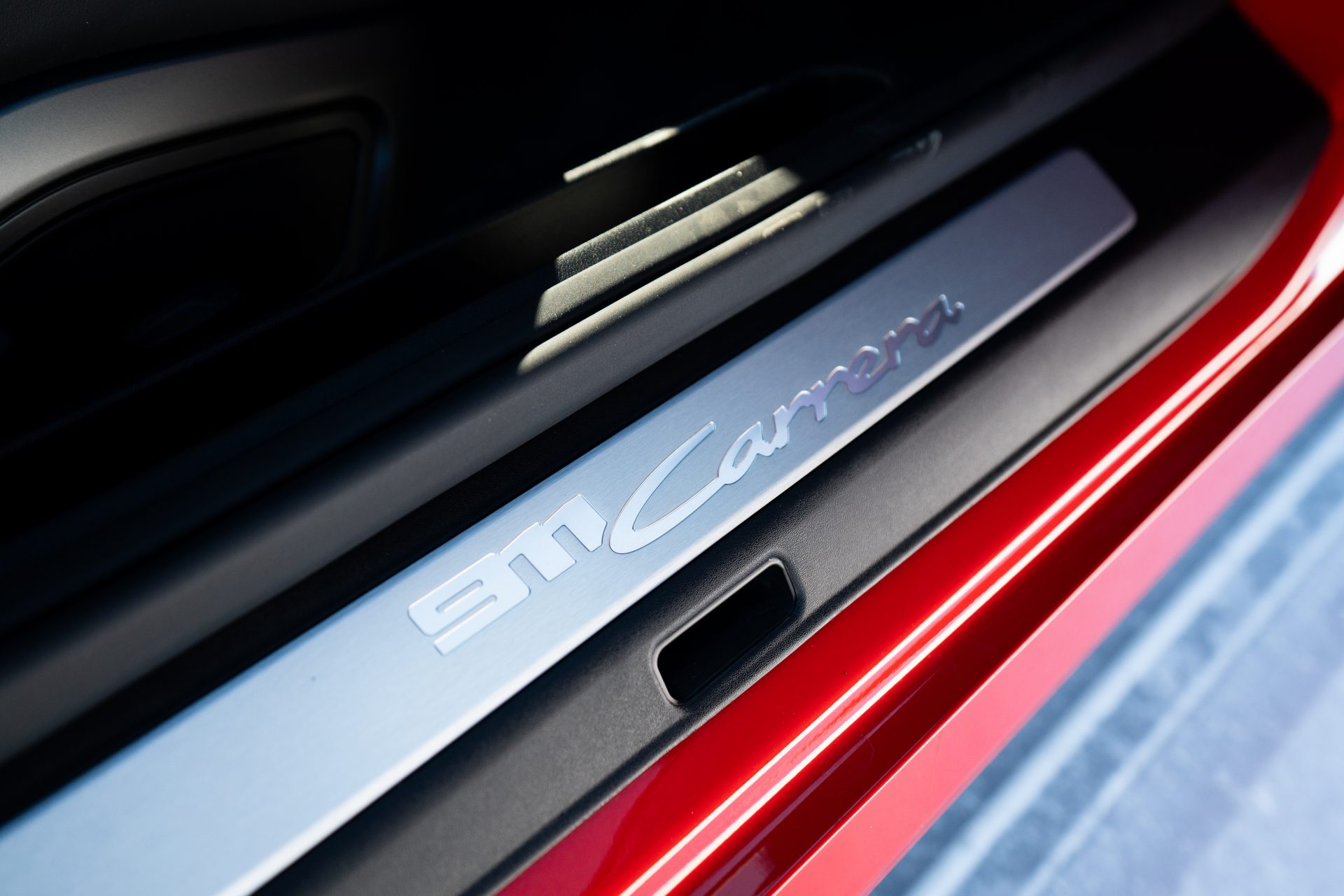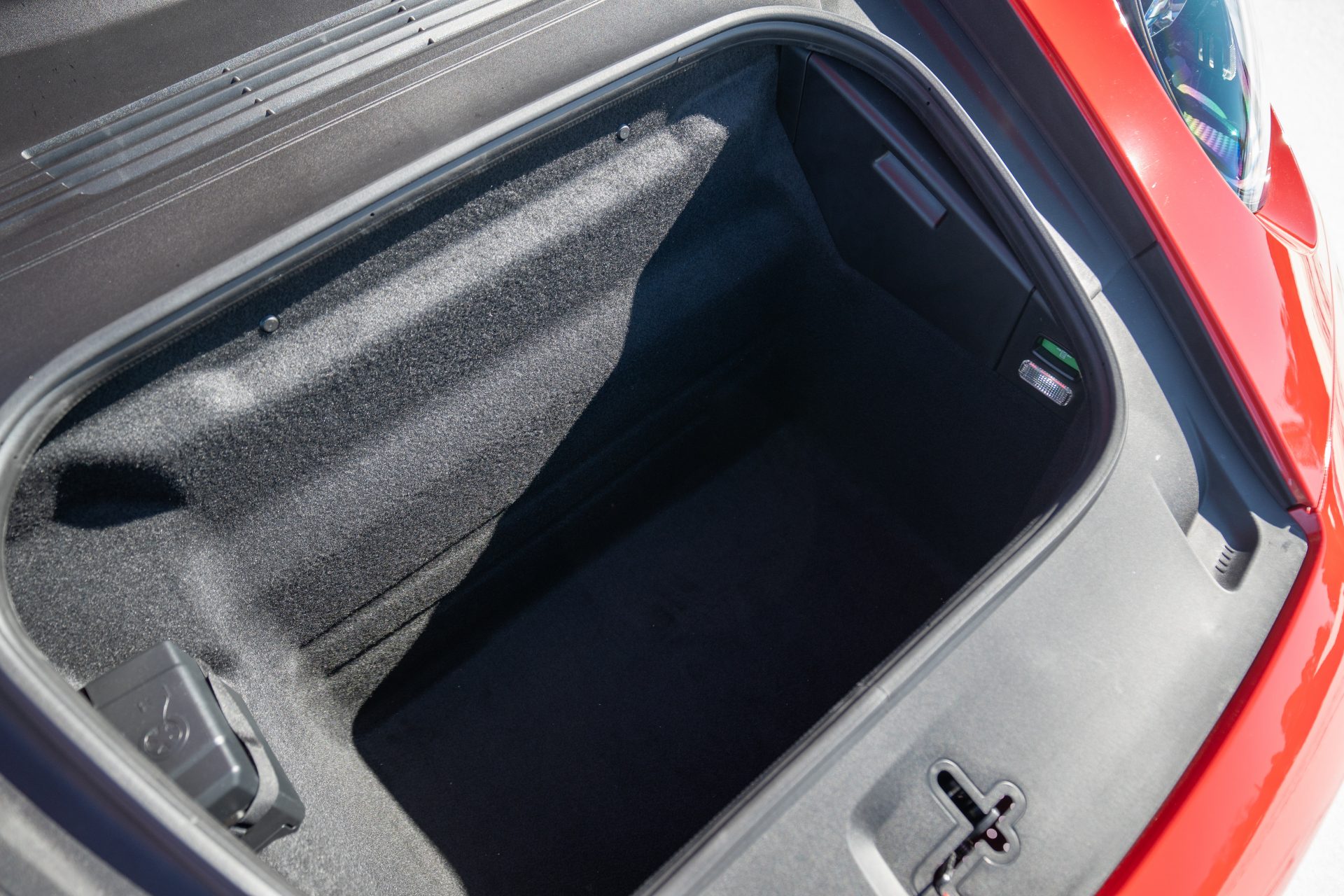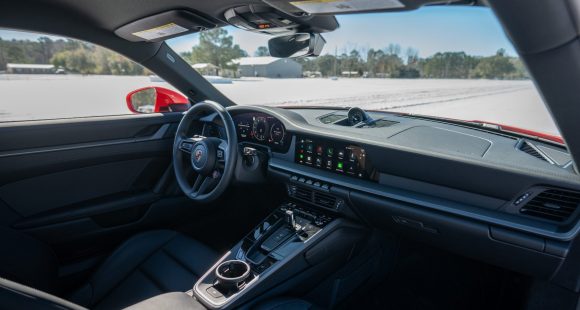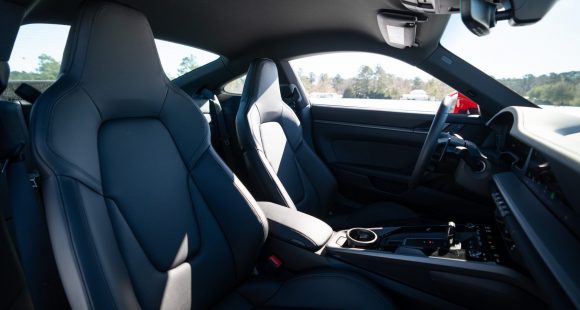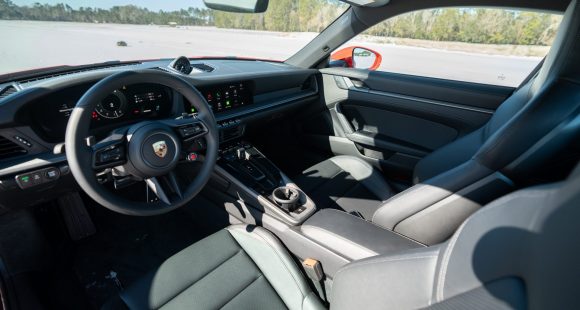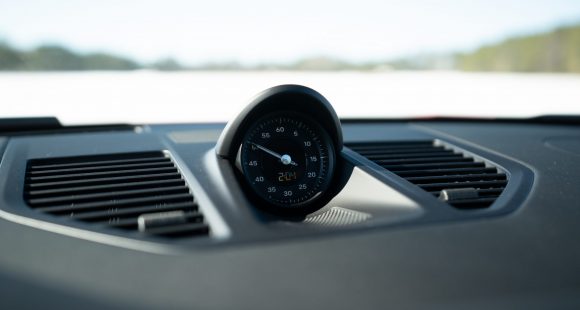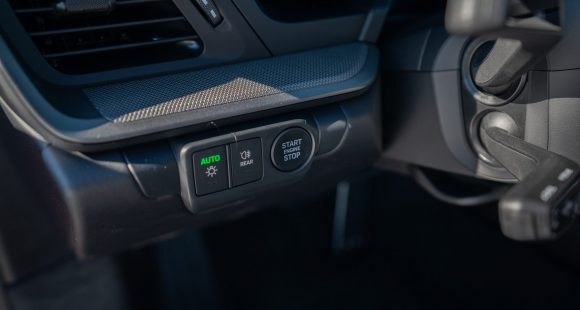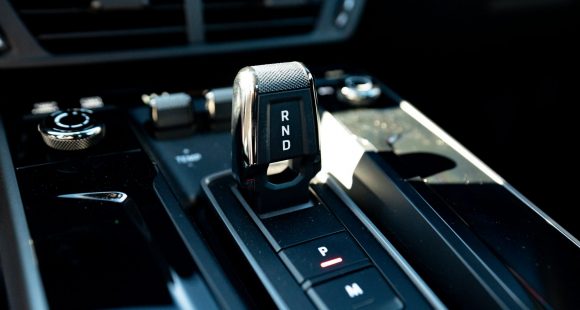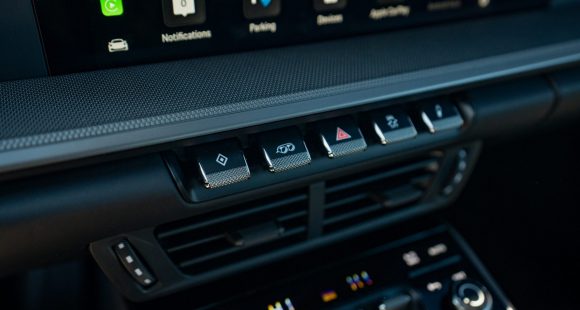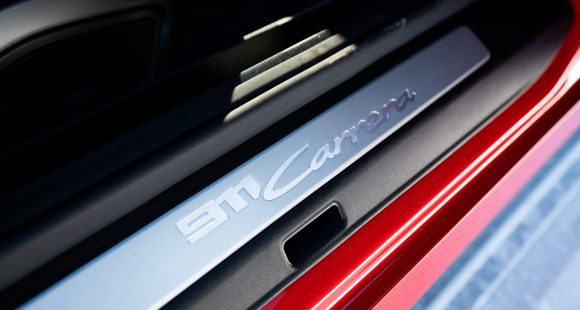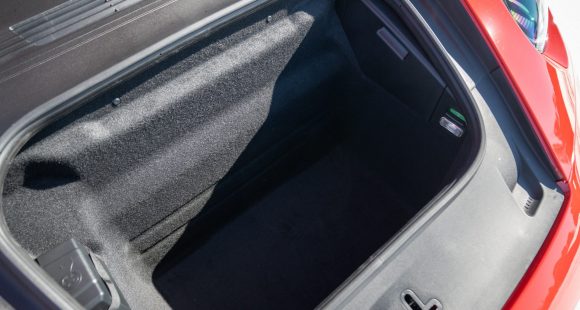It’s probably safe to say that there aren’t too many American neighborhoods where you won’t find a Honda Pilot shuttling kids from one place to another. In just 2 generations the Pilot has become a big seller among three-row crossovers. Now it’s time for a new, 3rd generation Pilot with both more style, and more substance, ready to take on suburbia.
The all-new, mid-size, seven or eight passenger 2016 Honda Pilot is the brand’s most ambitious crossover utility to date, ready to take its family multi-tasking to new levels.
When the outgoing Pilot arrived for 2009, we, as did many others, gave Honda grief over its old-school, boxy shape. And perhaps, looking back, it was a little unfair…as now that the Pilot has a more modern and rounded shape, it looks like every other crossover, losing most of its distinctiveness.
All the necessary elements are here for a contemporary design; 20-inch wheels, a first for Honda, L.E.D. head and tail lights, and of course L.E.D runners; though they mostly blend in and don’t stand out like most rivals.
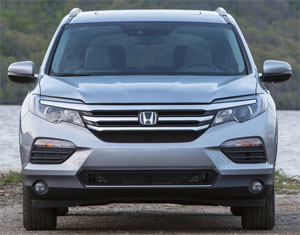 Wheelbase is longer by almost 2-inches, length grows by 3, and visibility has been improved all around.
Wheelbase is longer by almost 2-inches, length grows by 3, and visibility has been improved all around.
A glass panoramic roof is available, another first for the brand, but instead of a single panel like many others, it’s still 2 separate glass panels. This design, Honda says, allows the DVD screen in an optimal ceiling mount viewing position, while also retaining roof cross bracing for better rollover protection.
And, being a family hauler, above average occupant protection is a huge selling point, so there’s an all-new crash structure, along with LaneWatch camera, automatic braking, and lane keep assist. All are available on mid trim EX, though oddly, blind spot monitoring, coupled with rear cross traffic alert, comes only with new, top drawer Elite.
The new Pilot cruises down the road very nicely, with a smooth and controlled ride, despite the 20s; thanks to a stiffer chassis that enables a much better compromise between ride comfort and handling. Steering is very responsive and even has a good amount of feel.
Handling is nimble and almost CR-V like, as you find yourself charging into corners a little faster than you probably should. At which time you feel a large percentage of its 2-tons begin transferring and you back off a little. That weight is about 300-lbs. less than previous and there’s noticeably less roll in corners.
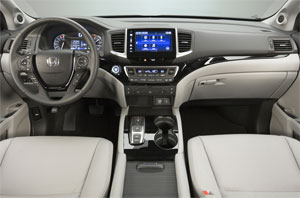 Acoustic side glass helps keep noise down, though not quite to luxury-car levels.
Acoustic side glass helps keep noise down, though not quite to luxury-car levels.
Just about every modern accoutrement you expect can be found in the new interior, though it’s also the source of our biggest complaint. And that is the lack of a traditional speedometer, as there’s only a digital readout for speed keeping.
A multi-view back up camera is standard, heated and ventilated fronts are available, as are heated rears; and the new Garmin-based navigation is a huge improvement. The new climate panel works well, but most controls for everything else flows through the touchscreen.
Access to the 3rd row is another improvement, with one touch 2nd row sliding and a wider opening, and most trims have 5 USB ports.
Even base Pilots are 8-passenger with a 2nd row bench seat. But most significant is the 7-passenger walk-through version with 2nd row captain’s chairs for the first time, again with top level Elite trim.
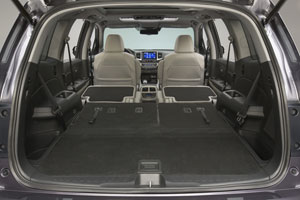 Despite being larger overall, cargo room is about the same due to the sloping roof, but there’s a nice reversible cargo floor to take abuse.
Despite being larger overall, cargo room is about the same due to the sloping roof, but there’s a nice reversible cargo floor to take abuse.
The same variable cylinder management 3.5-liter V6 provides power; though like Honda’s 4-cylinders, it’s now direct injected and therefore gets an Earth Dreams logo as well as a slight boost in muscle. Totals are now 280–horsepower and 262 lb-ft.
A 6-speed automatic transmission is standard, but Touring and Elite trims add a new 9-speed transmission. It is the smoothest 9-speed we’ve tried yet. Unfortunately, it comes with the same non-intuitive push-button shifter that we dislike so much in recent Acuras.
Auto stop/start comes with the 9-speed, but can be easily switched off.
Traditionally very capable off-road, the Pilot gets a new all-wheel-drive system, and while you can no longer manually lock anything, electronically controlled driving modes do the work for you. It worked well in simulated mud and bad weather demonstrations; as well as provided improved handling on dry pavement with Acura’s torque vectoring approach, using clutch packs to divert power, rather than power robbing selective braking.
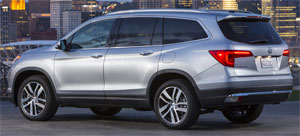 Government Fuel Economy Ratings are not finalized, but Honda claims with the 9-speed they’re best in class at 20–City, 27-Highway, and 23–Combined; 6-speed numbers are 19-City, 27-Highway, and 22-Combined.
Government Fuel Economy Ratings are not finalized, but Honda claims with the 9-speed they’re best in class at 20–City, 27-Highway, and 23–Combined; 6-speed numbers are 19-City, 27-Highway, and 22-Combined.
With base pricing of $30,875 and Elite trim coming in at $47,300, there are certainly better bargains in the segment, but those prices aren’t high enough to keep the new Pilot from becoming a huge success.
As regardless of the price, or the oddly structured safety options, or the less distinctive looks, the much improved 2016 Honda Pilot will surely be one of the top selling 3-row crossovers in no time at all. As usual, Honda knows exactly what their customers want, and finds a way to deliver it to them, time and time again.
Specifications
- Engine: 3.5 liter V6
- Horsepower: 280
- Torque: 262 lb-ft.
- EPA: 20 mpg city/ 27 mpg highway for 9-speed
Long Term Updates
Mileage: 2,600Our 2016 Honda Pilot’s first month in our long-term fleet was a busy one. It included our annual trip south for winter testing, as well as getting us through our first major Mid-Atlantic snow event, racking up a quick 2,600 miles.
On our highway trek south; other than finding the seats a little hard for our liking, the Pilot proved to be a good cruiser with more than adequate passing power and smooth transmission operation.
Though we could do without the 9-speed’s electronic shifter layout nonsense; and since cargo was priority, we would have preferred a traditional bench over the 2nd row captain’s chairs for a more expansive load floor.
So far we’ve averaged a fine 24.4 miles-per-gallon with its 3.5-liter V6.
As for behavior in the blizzard, with snow mode engaged, it did an excellent job of providing traction and stability on snow covered roads.
But it may not be a true cold weather fan, as on a recent single-digit morning, our commute was accompanied by constant warnings of systems that were experiencing problems; though it seemed to drive just fine.
Mileage: 6,000Spring is fully in bloom here in the Mid-Atlantic, and our 2016 Honda Pilot 3-row crossover has been a welcome companion for spring cleaning and checking things off the honey-do list.
Cargo space inside maxes out at 109 cubic-ft. That’s more than most full-size utes; short of just about everything except for a minivan.
We’ve put 6,000-miles on the Pilot, averaging a reasonable 22.3 miles-per-gallon. And the only conundrum so far, is why there’s an overly-complicated, slow to respond electronic shifter; while at the same time there’s an old school, floor space-robbing, foot-operated parking brake, when even the new Civic comes standard with an electric parking brake.
That quibble aside, the Pilot is a great long distance cruiser. And as the weather continues to warm, we’re guessing this crossover will be a popular choice for staff vacations.
Mileage: 8,000We’re 4–months into the yearlong odyssey with our Honda Pilot 3-row crossover. And we took the old adage, “if you’re going to do something, do it right” to heart, choosing top Elite trim.
Even after 8,000–miles, we’re still discovering new features, like brilliant full LED headlights, booming sound system, and remote start.
We certainly haven’t felt a need for more power from the 3.5-liter V6 and true 9-speed automatic transmission; though fuel economy has slipped a tad this go-around to 22.1 miles-per-gallon.
Mileage: 10,300Piloting our 2016 Honda Pilot 3-row crossover over the last 5-months has been the typical Honda experience; roomy and worry-free, although not typically exciting.
No problems to report, and over the last 2,300-miles since we last checked in, we’ve packed in a few road trips; and found near full-size SUV cargo space for hauling, yet agile mid-size sedan-like handling.
And impressive Fuel economy with the 3.5-liter V6 with its 9-speed automatic transmission, now averaging 22.8 miles-per-gallon. We’ve seen 28 during highway cruising.
Our only wish so far is for a little more padding in the front seats.
Summer’s here, and the livin’ sure is easy with our 2016 Honda Pilot. You couldn’t ask for a better family vacation vessel; and this 3-row crossover has been busy doing just that, hitting the R&R spots up and down the East Coast.
Its bigger size and increased interior space over the previous Pilot are much loved; though it still feels and handles like a midsize car.
Mileage so far, from the 3.5-liter V6 9-speed automatic combo platter is good at 22.7 miles-per-gallon of regular.
The new navigation system looks great and works well, despite some staff members not being fans of the touchscreen only controls. And we’re mostly getting used to the gear selector, a few even like the push button setup.
All-in-all, we’re certainly glad to have the Pilot in our fleet…
Mileage: 20,000The calendar may now say December, but since our last report, our 2016 Honda Pilot has driven through just about every season of the year; including summer-like temperatures, autumn colors on our way to the North East, and snow once we arrived, handling them all equally well.
Our Pilot’s road trip acuity has been well documented; but usually we’re referencing things from the driver’s perspective, noting the car-like handling and ultra-quiet interior.
This time however, it’s the passengers that have been weighing in; loving all of the cup holders and USB ports, as well as praising the comfortable, reclining 2nd row seats.
With our odometer now showing well over 20,000-miles, fuel economy has slipped ever so slightly this go-around to 22.7 miles-per-gallon; still great for a three-row, big family-size crossover.
Arguably, it’s not the most dynamic looking CUV on the market; but we’ll take big family friendly features over “look at me styling” any day.
Everything seems to be holding up well, as we’ve had no major problems over 10-months, though we’ve recently noted some steering wheel vibration under hard braking.
We still have nothing but praise for the 3.5-liter V6 engine; and believe it or not, fewer complaints recently about the sometimes clunky 9-speed automatic transmission.
But the touchscreen interface is still drawing its share of critics; and the “safety at all costs” Honda Sensing system has sensed an awful lot of pending collisions that aren’t there.
Unfortunately, our year with the Pilot is drawing to a close, so we’ll keep racking up the miles while we can, and enjoying every one of them.
Mileage: 17,000There’s certainly no shortage of new 2016 Honda Pilots on the road, and no shortage of miles being racked up on our long-term example either; having put over 17,000 on the dial over these last 8-months.
Every weekend it seems our three-row, 6-passenger Pilot is off on another getaway.
And, there haven’t been any major complaints about seat comfort or usefulness. In fact, most recently the log book was full of praise for the multitude of storage bins and shelves up front, for stashing electronic devices and no doubt snacks as well.
The 280-horsepower 3.5-liter V6 continues to deliver good power; with fuel economy back on the uptick to 23.1 miles-per-gallon.
Surely the 9-speed automatic transmission helps, yet some of our crew find its operation is not always the smoothest. Ditto for the auto stop/start system, which is a necessary MPG evil we’re all going to have to live with.
Mileage: 19,000An almost equally prodigious summer vacation vessel is our 2016 Honda Pilot. There’s no kitchen facilities or any sleeping quarters here, but it’s certainly smoother and a whole lot quieter.
We’ve seen over 27 miles-per-gallon in highway cruising from the 3.5-liter V6; but our overall average after 19,000 miles and 9-months; has slipped a little to 22.9 this term.
We still have mixed feelings about the 9-speed automatic transmission. It works well in most situations, like downshifting on steep downhill grades. But while steady cruising; between it shifting in and out of overdrive and the engine activating and deactivating cylinders, is all a bit too busy for our tastes.
Mileage: 25,000Winter weather has finally arrived in our mid-Atlantic region; and the 2016 Honda Pilot Elite that has been in our fleet for almost a full four seasons has already proven to be an able crossover for all of them. Snow, mud, and simply crowded interstates; thanks to all-wheel-drive and Intelligent Traction Management, the Pilot handles them all proficiently. While still averaging 22.8 miles-per-gallon of regular. No turbo-4 here, as the Pilot sticks with a tried and true 280-horsepower 3.5-liter V6, albeit ours with cylinder cut-off and automatic stop-start. Unfortunately, unlike the previous gen. a tow hitch is not standard, so we’ve been unable to test out the Pilot’s 5,000-lbs. towing capacity.
As we approach 25,000-miles, we’re getting close to using up the original rubber; and through all of it, we continue to be a bit frustrated by the Elite’s 9-speed automatic transmission’s operation, particularly with its harsh and sometimes indecisive low speed engagement. But you won’t have to worry about that, unless you upgrade to Touring or Elite trim; as LX, EX, and EX-L trims get along just fine with a 6-speed. But that’s a tough call as far as we’re concerned; as we’d surely miss our Pilot’s larger sunroof, ventilated front seats, 2nd row heated Captain’s Chairs, and Rear Cross Traffic Monitor!
Mileage: 31,563As for our large crossover peoplemover, the 2016 Honda Pilot; well, the news is bad. It’s not that it has done anything wrong, but our year with it is now up.
So we say good-bye to what has been one of our favorite long-terms ever, evidenced by the 31,563-miles we laid on it in one year’s time.
Our biggest gripes revolved around the sometimes jerky 9-speed transmission and its push button gear selector, but we almost got used to it.
No complaints at all about the engine it’s attached to. The Pilot’s smooth 280-horsepower 3.5-liter V6 was more than adequate in all conditions, and averaged 23.0 miles-per-gallon. Making the Pilot truly hard to replace.







 Wheelbase is longer by almost 2-inches, length grows by 3, and visibility has been improved all around.
Wheelbase is longer by almost 2-inches, length grows by 3, and visibility has been improved all around. Acoustic side glass helps keep noise down, though not quite to luxury-car levels.
Acoustic side glass helps keep noise down, though not quite to luxury-car levels. Despite being larger overall, cargo room is about the same due to the sloping roof, but there’s a nice reversible cargo floor to take abuse.
Despite being larger overall, cargo room is about the same due to the sloping roof, but there’s a nice reversible cargo floor to take abuse.  Government Fuel Economy Ratings are not finalized, but Honda claims with the 9-speed they’re best in class at 20–City, 27-Highway, and 23–Combined; 6-speed numbers are 19-City, 27-Highway, and 22-Combined.
Government Fuel Economy Ratings are not finalized, but Honda claims with the 9-speed they’re best in class at 20–City, 27-Highway, and 23–Combined; 6-speed numbers are 19-City, 27-Highway, and 22-Combined. 